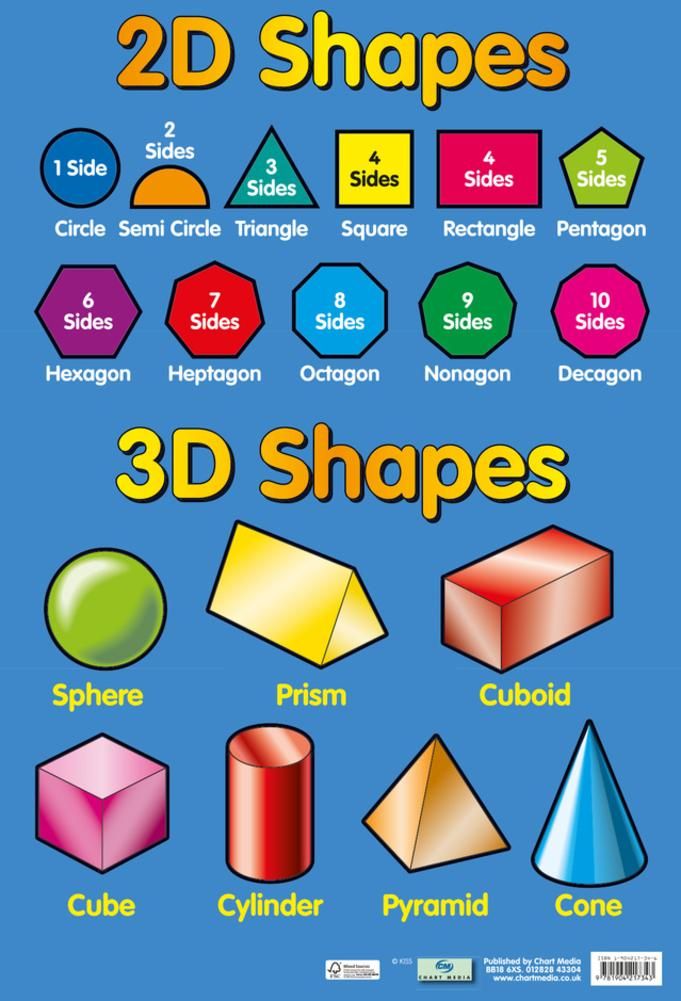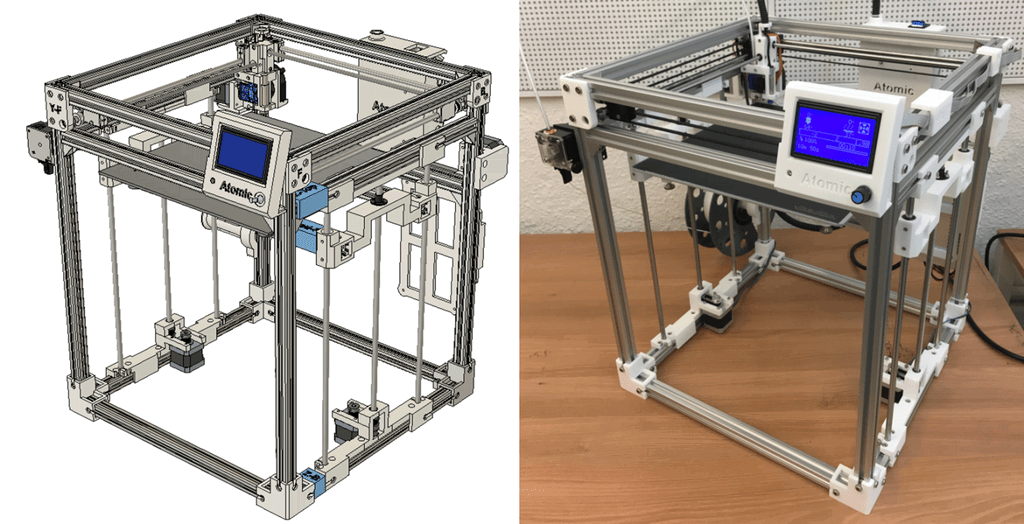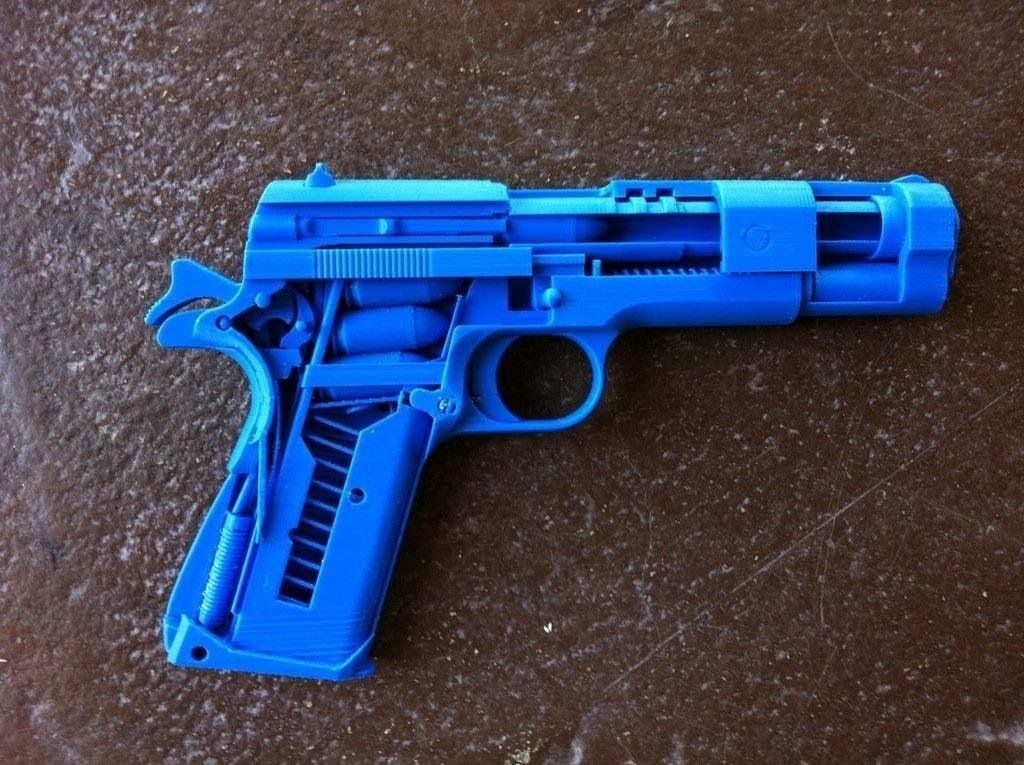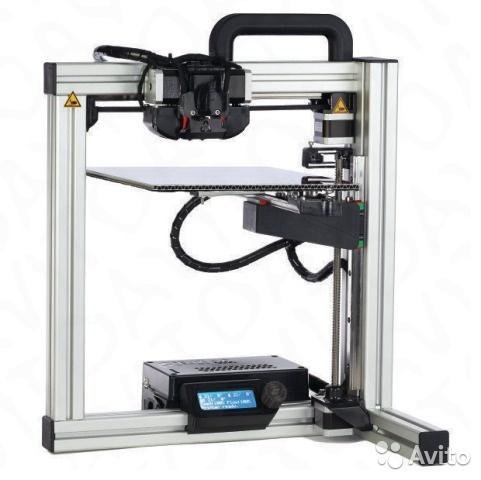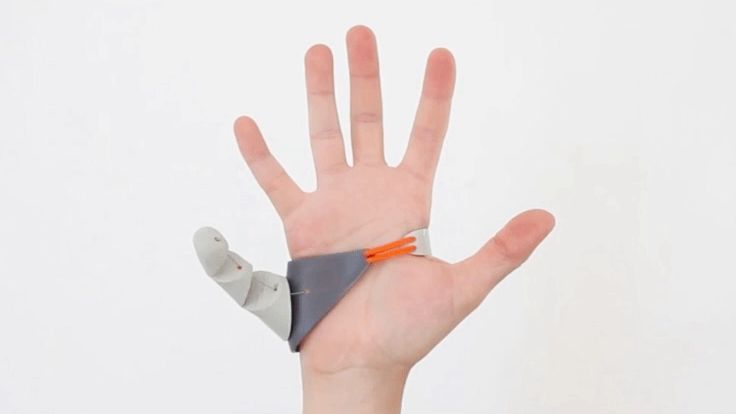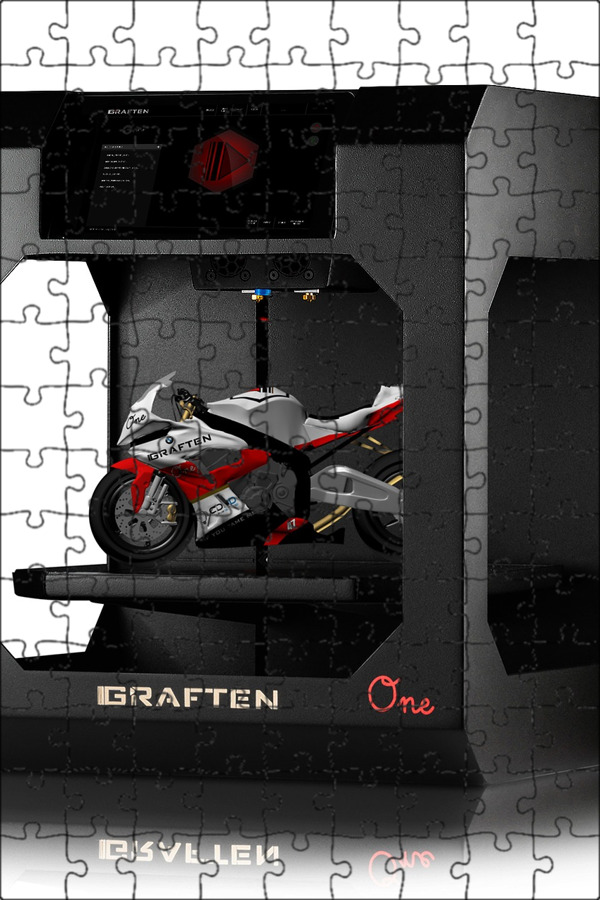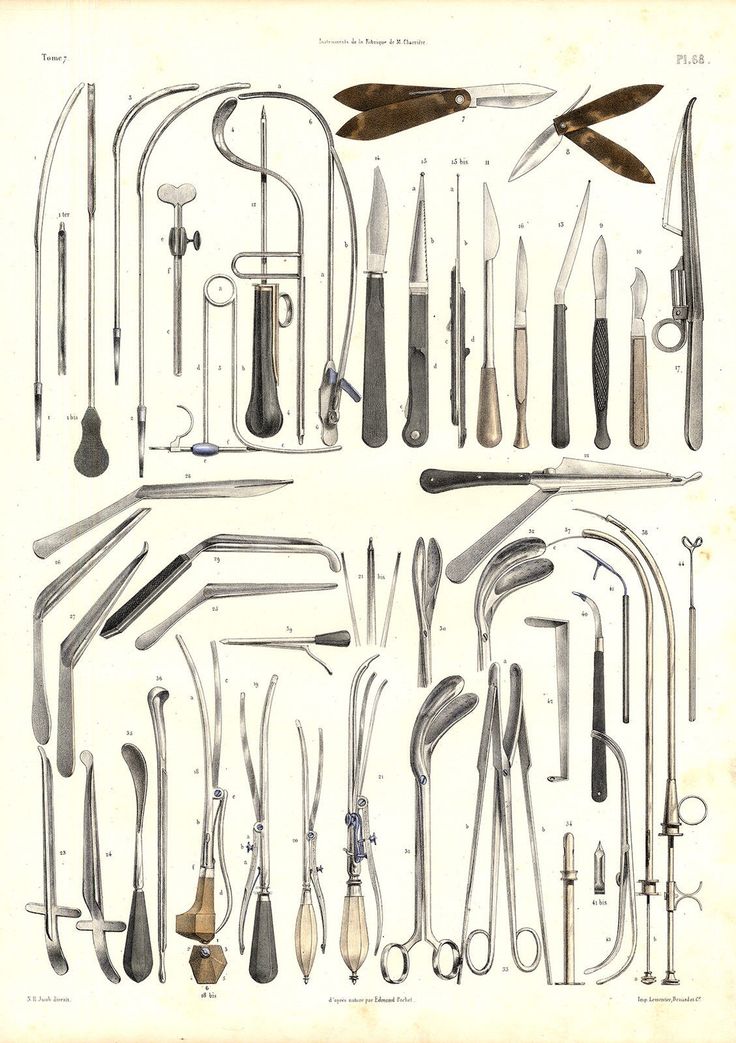3D printing kit
The 10 Best DIY 3D Printer Kits 2022 (Starting at $150!)
Increasingly, makers are turning away from desktop FDM 3D printers, preferring to buy a cheap 3D printer kit and build their own DIY 3D printer from scratch. Some of these are RepRap 3D printer kits, and some are specially designed kits.
The 3D printer kit revolution has reduced prices, led to a number of key breakthroughs, and has made 3D printing more accessible than ever before.
Great Ender 3 Alternative
Amazon here
Best Budget 3D Printer
Amazon here
Best 3D Printer Kit Overall
Buy pre-assembled here
These 3D printer kits can take just a few minutes to assemble, or take hours or even days. They can also vary greatly in price, print accuracy, maximum build and print speed. Some even use technologies other than fused deposition modeling — you can now buy DIY SLS 3D printers and SLA 3D printers.
| 3D printer kit name and brand | Build Volume (mm) | Price | Where to purchase for best price | Alternative Purchase Option |
|---|---|---|---|---|
| Creality Ender 3 | 220 x 220 x 250 | $189 | Creality Store here | Amazon here |
| Prusa Mini | 180 x 180 x 180 | $399 | Prusa Store here | |
| Creality Ender 3 V2 | 220 x 220 x 250 | $279 | Creality Store here | Amazon here |
| Creality Ender 5 | 220 x 220 x 300 | $349 | Amazon here | |
| Flsun QQ-S | 255 x 255 x 360 | $369 | Amazon here | |
| Tronxy X5SA Pro | 330 x 330 x 400 | $399 | Amazon here | |
| Anycubic Vyper | 245 x 245 x 260 | $429 | Anycubic here | Amazon here |
| Creality CR-10 / V3 | 300 x 300 x 400 | $369 / $459 | Creality here | Amazon here |
| Prusa i3 MK3S | 250 x 210 x 210 | $749 / $999 | Kit available available on Prusa Store here | Fully assembled on Prusa Store here |
| Peopoly Moai | 130 x 130 x 180 | $1,295 | Matterhackers here |
Advantages of DIY 3D printers
- Open source: Most homemade 3D printers are also open source 3D printers, meaning they can be tinkered with, upgraded, and modded freely with the creators’ permission. Many Creality, Prusa and Anet printers are open source, as well as desktop 3D printers like BCN3D and Ultimaker printers.
- Open build areas: 3D printer kits rarely feature closed chambers or enclosures as standard. This would affect the printing of filaments like Nylon or PEEK, but is less of an issue for standard filaments like PLA or PETG.
- Easily upgradable parts: DIY 3D printer owners are frequently switching out parts, such as nozzles, hot ends and extruders for better quality parts.
- Lower price: For the quality and size, you get a better deal if you build your own 3D printer.
- Larger build volume: The open build area means that you can have a larger 3D printer build area for the same size, neglecting the need for an enclosing frame.
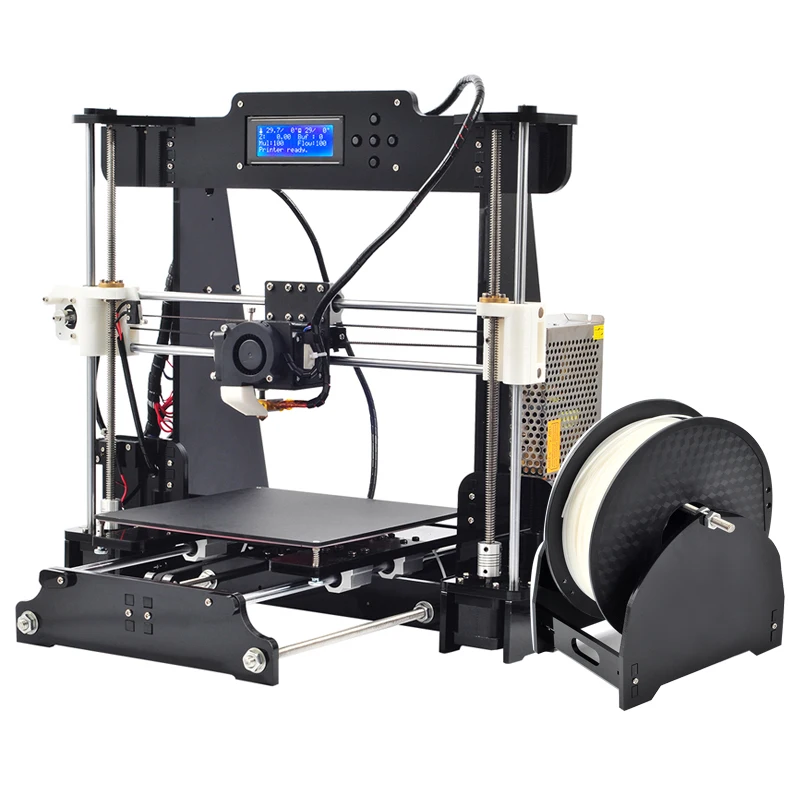 Therefore, low cost kits like the Creality CR-10 can have huge build volumes.
Therefore, low cost kits like the Creality CR-10 can have huge build volumes.
Build your own 3D printer: what makes a good DIY 3D printer?
We used several criteria to determine which 3D printer kit made it into our ranking:
- Cheap DIY 3D printer kits: We only included FDM 3D printer kits under $1,500. The printers are listed in price order, cheapest first.
- Print quality
- It it easy to build your own 3D printer: Not everyone is a technology wizard. Therefore, any kit that can be assembled quickly, easily, and is simple to operate, is at an advantage.
The best 3D printer kits
3DSourced is reader-supported. When you buy through links on our site, we may earn an affiliate commission. Learn more
1. Creality Ender 3
- Price: $189 — Available on Creality Store here / Available on Amazon here
- Build volume: 220 x 220 x 250 mm
The original Ender 3 is still one of the most popular 3D printer kits in the world, more than three years after it was originally released.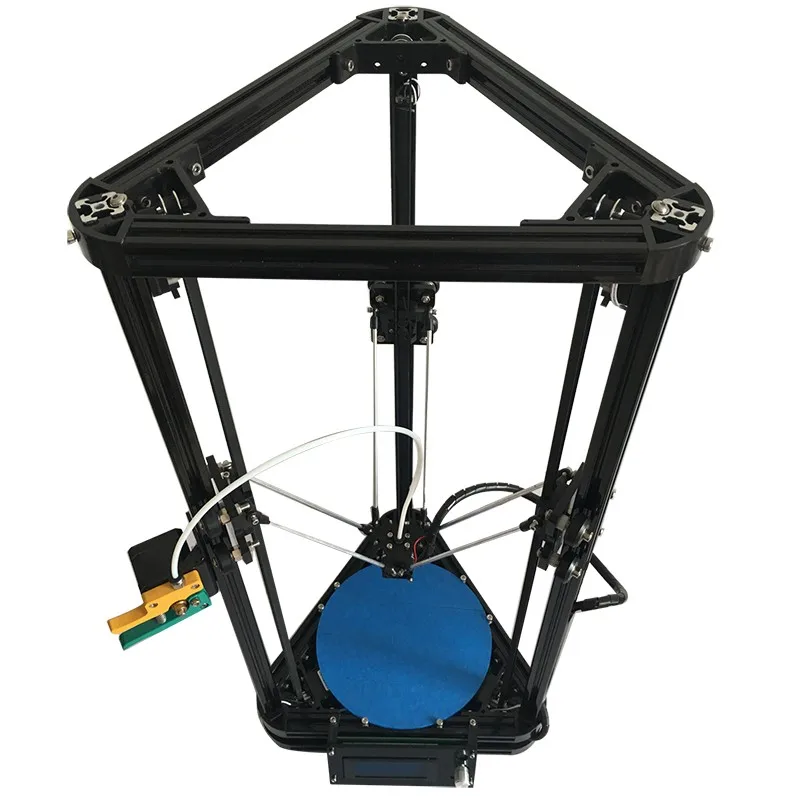 The low price, great build area, and reliability have cemented the Ender 3 as one of the best 3D printer kits around.
The low price, great build area, and reliability have cemented the Ender 3 as one of the best 3D printer kits around.
The reliability is a major selling point in such a cheap 3D printer kit. Whereas most DIY printers in this price range are plagued by issues caused by low-quality parts, the Ender 3 is dependable and consistent, partly due to its upgraded extruder to prevent clogging or poor extrusion.
The resume printing function is useful if you’re prone to power cuts or want to print for several days straight and don’t want to risk a huge ruined print, and the Ender 3 is fairly quick to assemble, and shouldn’t take more than an hour or so.
However, it doesn’t feature auto-leveling — you’ll need to install a BLTouch or similar kit for that.
Best Budget 3D Printer
Creality Ender 3 3D Printer
The best budget 3D printer kit around - and the best-selling, too. If you have the budget, pick up the V2 or V2 Neo version, or even the Ender 3 S1 if you prefer a direct drive extruder.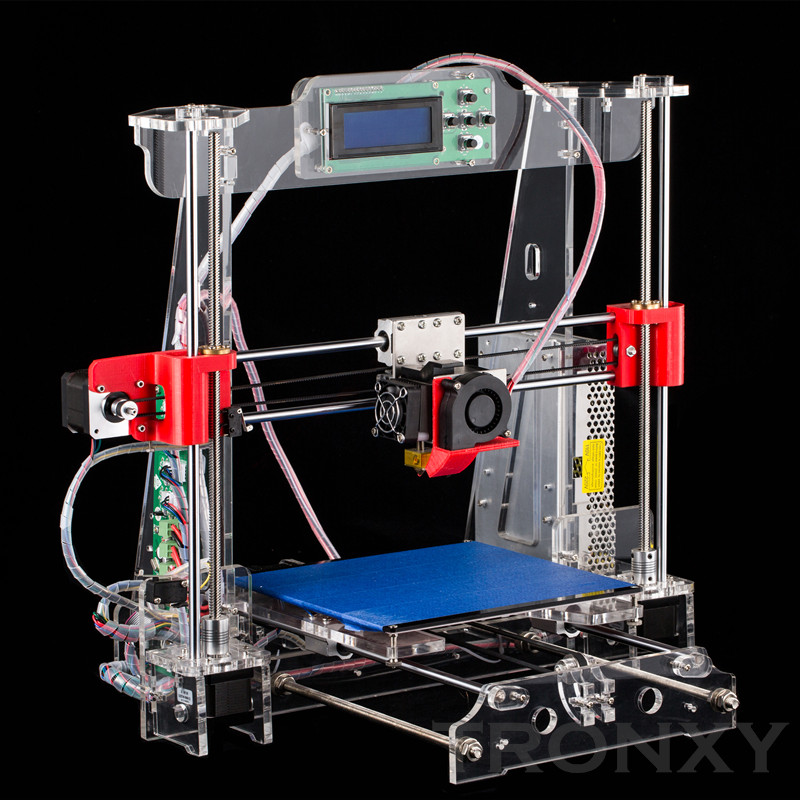
Creality hereAmazon here
We earn a commission if you make a purchase, at no additional cost to you.
2. Prusa Mini — Great Prusa 3D printer kit
- Price: $399 — Available on Prusa Store here
- Print volume: 180 x 180 x 180 mm
- Print speed: up to 200mm/s
The Mini 3D printer version of the wildly successful Prusa MK3S, the Mini retains the 0.05mm layer precision and can still calibrate itself, but costs less than half of the i3 MK3S. With the Mini, you can build your own 3D printer — and one with Prusa-level reliability! — for just $349.
It’s more compact, with a smaller build volume, and features removable spring steel sheets that make removing finished prints extremely easy — just flex the build plate and prints will come off with ease.
The extruder cannot reach the same temperatures during printing as the MK3S, though you can still print a number of tougher filaments like ABS, PETG, ASA and flexible filaments. The Mini retains the fast 200mm/s max printing speed, and can be upgraded to feature a filament sensor.
The Mini retains the fast 200mm/s max printing speed, and can be upgraded to feature a filament sensor.
Overall, it’s another reliable 3D printer by the trusted Prusa brand who have proven over the years that their printers are some of the best 3D printer kits around. If you have the money, go for the MK3S, but for those on a budget, the Mini does a great job.
Best Mini 3D Printer Kit
3. Creality Ender 3 V2 — Best DIY 3D Printer Under $300
- Price: $279 — Available on Creality Store here / Available on Amazon here
- Build volume: 220 x 220 x 250 mm
Building on the success of the Ender 3 and improving and fixing its few flaws, the Ender 3 V2, while the same size build volume, is a much enhanced DIY 3D printer.
The upgraded motherboard makes the printer quieter than ever, and the extra power makes for a much more stable and precise printing experience.
Read more: the quiet 3D printer buyer’s guide
The upgraded extruder is also a great touch. It’s easier to load and feed filament into via the rotary knob, ideal for PLA and flexible filaments. The large 4.3-inch screen makes the interface more intuitive, and the Ender 3 V2 is really easy to use overall.
It’s easier to load and feed filament into via the rotary knob, ideal for PLA and flexible filaments. The large 4.3-inch screen makes the interface more intuitive, and the Ender 3 V2 is really easy to use overall.
Another extra is the carborundum glass platform, which can heat up faster than ever and improves adhesion so you can be sure of a great first layer. Overall, if you have the extra $100 to spare, consider going for the Ender 3 V2 over the original.
Top Pick
Creality Ender 3 V2
$279.99
Upgraded version of the original Ender 3 with a number of key quality-of-life improvements.
Creality Store hereAmazon here
We earn a commission if you make a purchase, at no additional cost to you.
4. Creality Ender 5 — The Best DIY 3D printer under $500
- Price: $349 — Available on Amazon here
- Print volume: 220 x 220 x 300 mm
Another Creality kit, the Ender 5 is another great 3D printer you can build at home. The Ender 5 is $100 more expensive, but boasts a number of improvements that make the extra money seem worth it.
The Ender 5 is $100 more expensive, but boasts a number of improvements that make the extra money seem worth it.
Firstly, it can print taller prints than the Ender 3 — 300 mm high rather than 250 — important if you print tall structures like tall vases or monument 3D models. The structure is also stronger, having adopted a cube shape like the Tronxy X5SA which helps with stability, reducing vibrations or movements from external events, and improving part surface finish and quality.
Moreover, the minimum layer height of 50 microns is extraordinary for such a cheap machine. Review after review repeats how crisp the surface finish of their prints look with the Ender 5, so it’s fair to say the Ender 5 is a smash hit.
- For an extra $50 you can upgrade to the Ender 5 Pro printer kit, at $399. It’s available to buy here.
Note: while the Ender 5 can be tweaked to increase print speed without a noticeable loss in print quality, we recommend you don’t get too extravagant with this.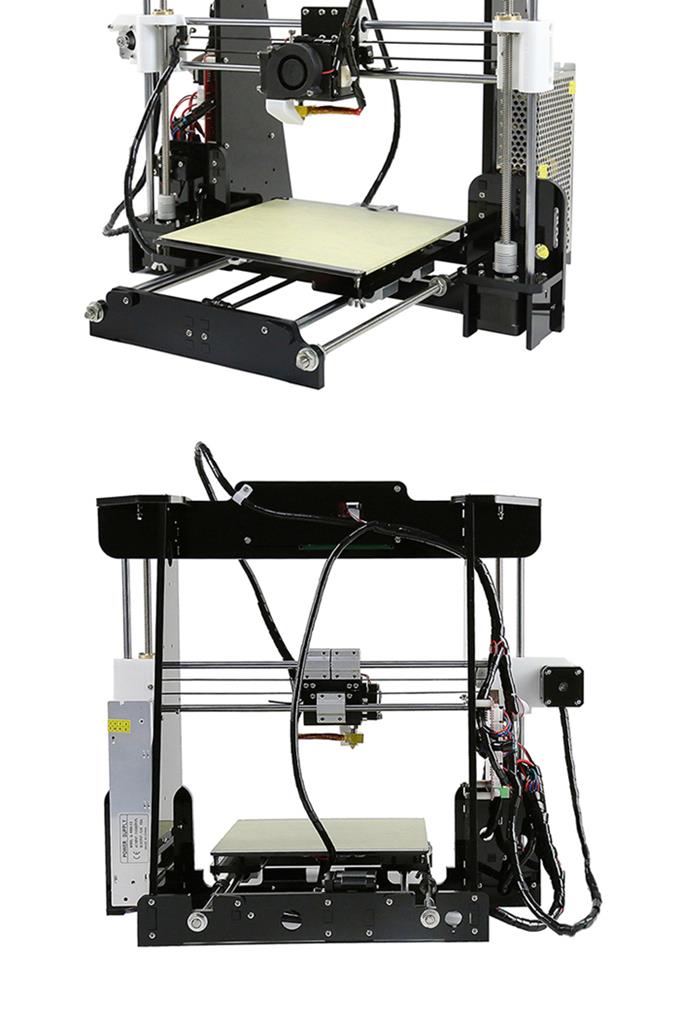 Stick with 60 mm/s or below for models with intricate parts — it’s worth a bit of extra printing time to guarantee crisp prints.
Stick with 60 mm/s or below for models with intricate parts — it’s worth a bit of extra printing time to guarantee crisp prints.
5. FLSUN QQ-S — Great Delta DIY 3D printer
- Price: $369 — Available on Amazon worldwide here
- Print volume: 255 x 255 x 360 mm
- Print speed: up to 300mm/s
One of the best DIY delta 3D printer machines out there, the Flsun QQ-S features notable improvements on the original Flsun QQ. It comes 90% assembled, so though technically still a 3D printer kit it will take under an hour to get up and running.
- We were lucky enough to test the FLSUN QQ-S, make sure to also check out our FLSUN QQ-S review.
Not only does it have a fantastic build volume for the price — especially the ability to print tall parts! — but it also comes with an upgraded lattice glass print bed, allowing for faster heating up to 100C in under 5 minutes, less warping and better adhesion during 3D printing. This is perfect for materials such as ABS filament, which are known to warp significantly under the wrong conditions.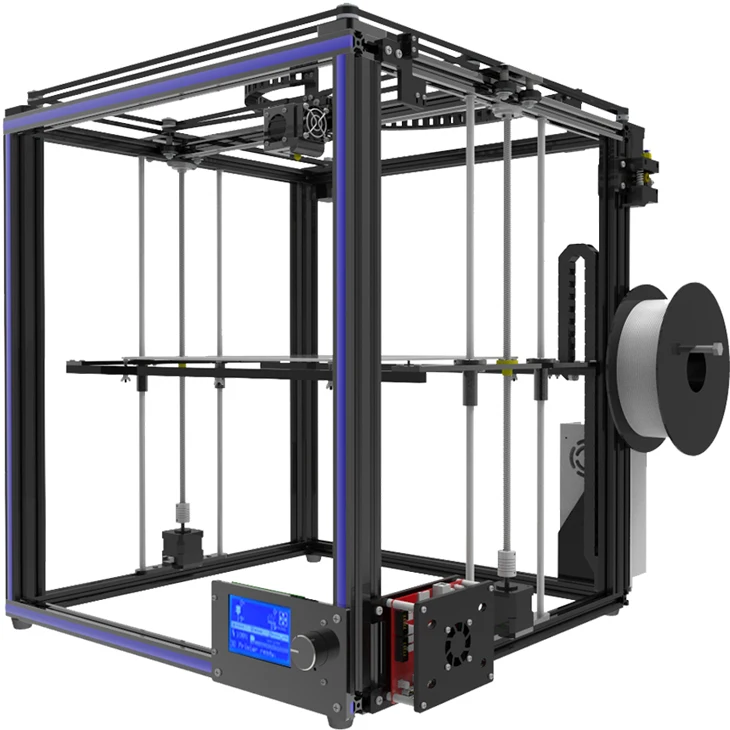
Another advantage that beginners will enjoy is that as delta 3D printers don’t move the print bed — the print head does all the moving — the printer only needs to be auto-leveled once. It comes with a titan extruder, and can print with common printing materials like PLA and ABS, PVA, and HIPS for supports, as well as wood-filled filaments and flexible filaments.
It’s accurate, too, able to print at up to 50 microns. Overall, it’s a fantastic delta 3D printer kit that prints accurately, and super fast — it even made it into our fastest 3D printer ranking. It’s also one of the easiest DIY 3D printers to build, coming almost fully assembled — you just need to attach the gears and rods to hold the structure up, and then attach the extruder and filament holder.
Best Delta 3D Printer Kit
FLSUN QQ-S-PRO Pre-assembled Delta 3D Printer
$399.00
Amazon here
We earn a commission if you make a purchase, at no additional cost to you.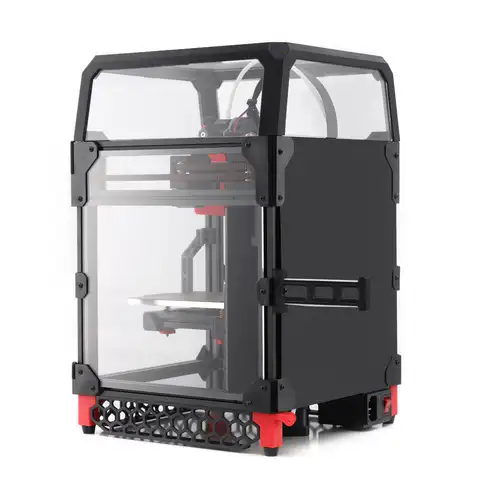
12/17/2022 07:55 pm GMT
6. Tronxy X5SA Pro — Huge Self-Assemble 3D printer
- Price: $399 — Available on Amazon here
- Build volume: 330 x 330 x 400 mm
Kit 3D printer kings Tronxy showed humility and dedication to improve the X5SA Pro, fixing a number of small issues that affected the original. The X5SA Pro addresses the X-axis issues and has made it more stable, and upgraded the materials forming the printer kit’s structure. Now on the X5SA Pro, most of the printer is made from aluminum and is heavier and more stable, reducing vibrations and generally improving print performance.
As for the X5SA’s specs, it’s a large 3D printer DIY kit with similar printing sizes to the Creality CR-10, and boasts a 330 x 330 x 400 build volume. It claims increased precision vs the original Tronxy X5SA, and has a maximum accuracy of 125 microns.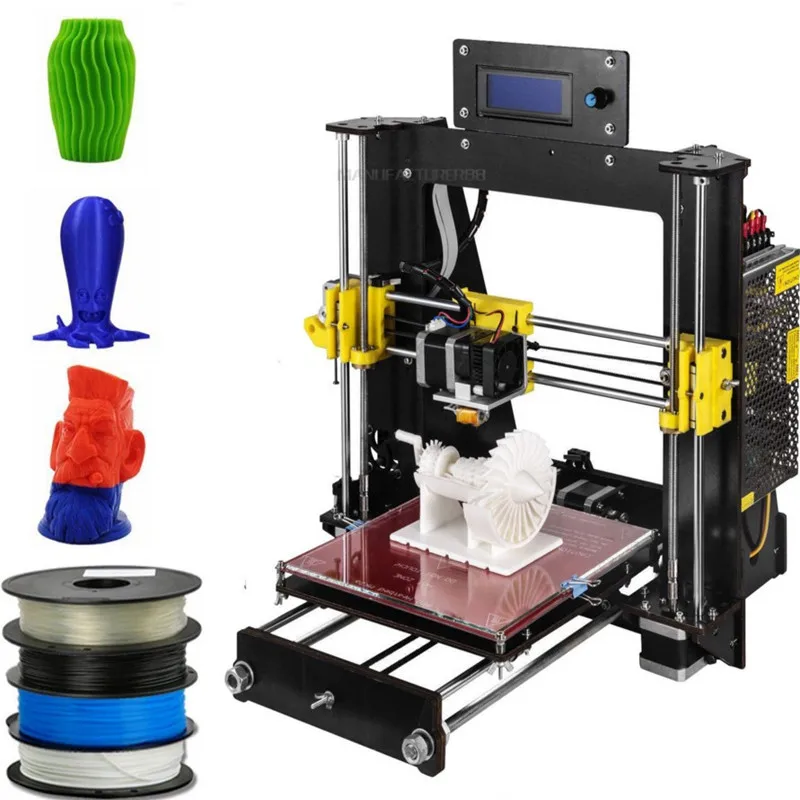 It’s impressive, reliable and one of the best cheap 3D printers you can get with such a large size — so those with big 3D printing ideas will enjoy both this and the Creality CR-10.
It’s impressive, reliable and one of the best cheap 3D printers you can get with such a large size — so those with big 3D printing ideas will enjoy both this and the Creality CR-10.
It’ll probably take you around four hours to build this printer kit, but it’ll be worth it once you start printing!
Big 3D Printer Kit
TRONXY X5SA PRO 3D Printer with Glass Bed Upgrade
Amazon here
We earn a commission if you make a purchase, at no additional cost to you.
7. Anycubic Vyper
- Price: $429 — Available on Anycubic store here / Available on Amazon here
- Build volume: 245 x 245 x 245 mm
A key feature on the Anycubic Vyper missing from many printers in this price range is that the Vyper self-levels. This is a huge relief for busy makers who would rather not re-level their printer every few prints, and who just want to get to the fun part — printing! The 16-point bed leveling process accounts for differences between the nozzle and bed and can be done in just one click.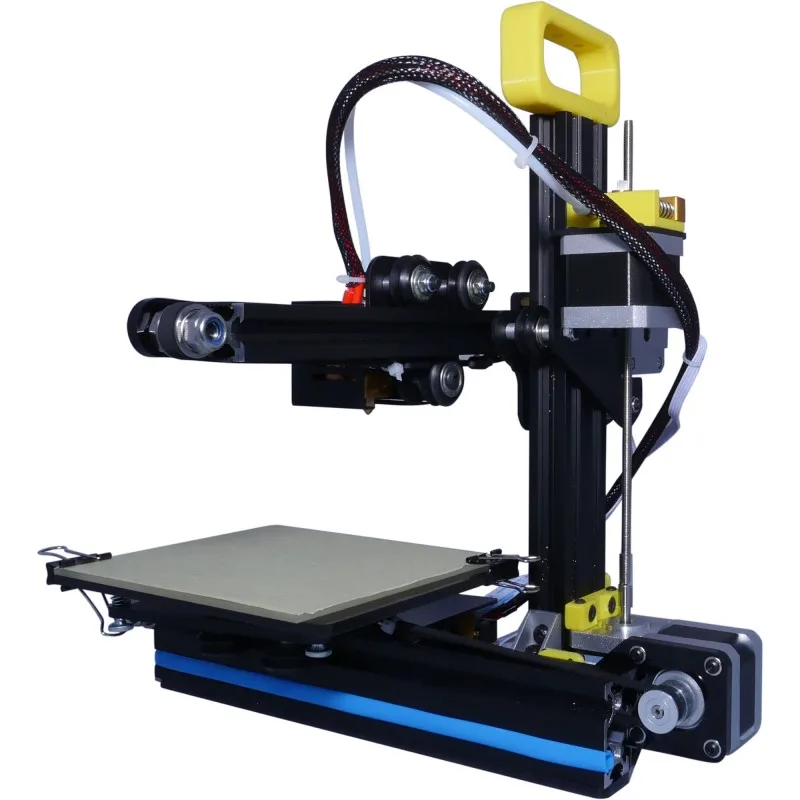
The 32-bit motherboard is beefed up compared to previous Anycubic 3D printer kits, offering silent printing and improved stability. We tested the Anycubic Vyper and found it to be consistent in printing, easy to operate with the 4.3-inch touchscreen, and it was incredibly easy to assemble — we built it in 10-15 minutes.
The new PEI spring steel magnetic print bed can be lifted off the platform easily for easy removal of your finished parts, and is designed to be scratch and heat resistant and to work well with standard filaments such as PLA, ABS, PETG, and TPU.
The Vyper also features an innovative new two-fan dual cooling system, cooling down parts quicker and enabling faster printing without causing errors — the Vyper can comfortably print at 100mm/s.
Great Ender 3 Alternative
8. Creality CR-10 / V3
- Price: $369 / $459 — Available on Amazon here / Available on Creality Store here
- Print volume: 300 x 300 x 400 mm
The Creality CR-10 has a passionate group of supporters who hail it as the best DIY 3D printer kit in its price range.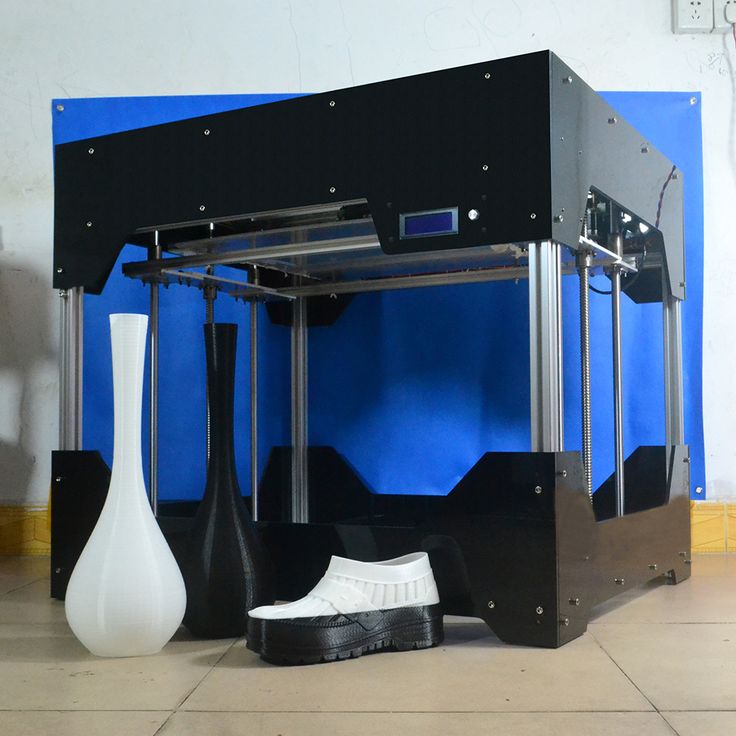 Manufactured by Creality, the CR-10 is a fantastic 3D printer build kit that can be built within 45 minutes.
Manufactured by Creality, the CR-10 is a fantastic 3D printer build kit that can be built within 45 minutes.
The Creality CR-10 has an accuracy and print volume which is competitive with printers 5 times more expensive. With it’s minimum layer thickness of 0.05mm and fantastic 300 x 300 x 400 mm build volume, the Creality CR-10 is a great printer for just $370. It’s easy to use, making it the perfect 3D printer for beginners.
9. Prusa i3 MK3S — best 3D printer kit
- Price: $749 as a kit — Available on the Prusa store here / $999 fully assembled — Available on the Prusa store here
- Build volume: 250 x 210 x 210 mm
The Prusa i3 is known as the undeniable king of DIY 3D printer kits. These RepRap kits are fantastic, sporting an impressive print volume of 250 x 210 x 210 mm, and being able to print at speeds up to 200mm/s! It’s also accurate, durable and a complete workhorse, with layer heights from 0.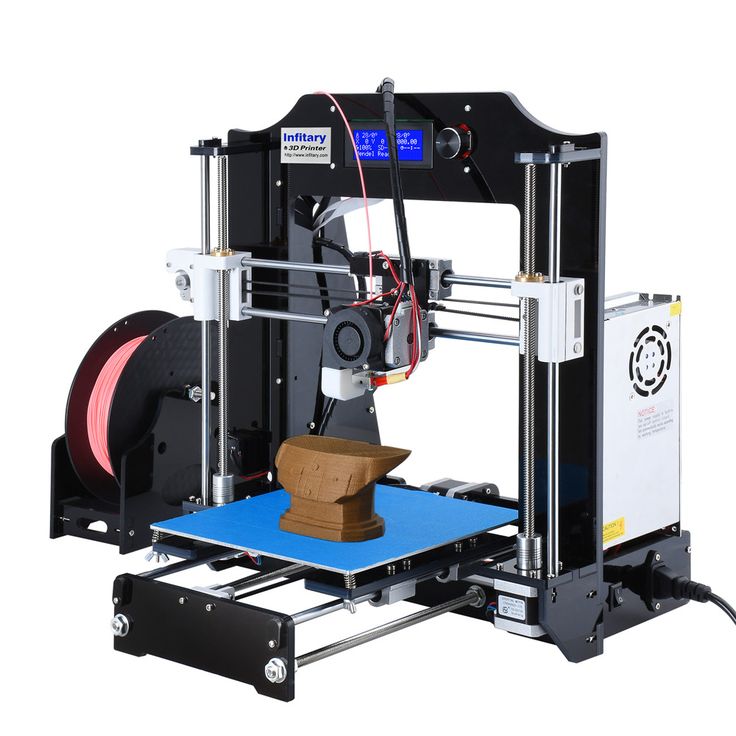 05 mm and a bendable print surface to make removing finished prints as easy as possible.
05 mm and a bendable print surface to make removing finished prints as easy as possible.
Accessible via USB stick or by SD card, the Prusa i3 MK3 kits are designed to be simple to use as well as effective. With layer resolutions up to 50 microns, the Prusa i3 homemade 3D printer is so effective that it outperforms far more expensive 3D printers. It can print tougher filaments than more expensive printers too, with a Bondtech extruder that can reach temperatures of up to 300C, making printing Polycarbonate, ABS, Nylon, and other difficult filaments no problem.
Additionally, you can print up to 5 colors simultaneously with your Prusa if you purchase their multi-material upgrade kit, costing $300. This makes colorful model printing a breeze, and opens up for far more extravagant printing projects.
The Prusa, with Multi Material Upgrade kit, allowing it to print multiple colors simultaneously. We explain this in our color 3D printer guide.- With a Multi Material Upgrade kit, it can also print multiple colors.
 We explain more in our color 3D printer buyer’s guide.
We explain more in our color 3D printer buyer’s guide. - You can buy the Multi Material Upgrade Kit 2.0 here.
You can choose to either assemble the kit yourself or buy the printer pre-assembled, though this costs a few hundred dollars more. Overall, the Prusa remains the undisputed king of DIY 3D printer kits, with its competitors needing to do a lot of catching up to dethrone it.
Best 3D Printer Kit Overall
Original Prusa i3 MK3S+ kit
The best 3D printer kit of all time. If you have $1,000, this is some of the best value you can get.
Buy as a kit hereBuy pre-assembled here
We earn a commission if you make a purchase, at no additional cost to you.
10. Peopoly Moai SLA Kit — Homemade resin 3D printer kit
- Price: $1,295 — Available on Matterhackers here
- Build volume: 130 x 130 x 180 mm
The only resin 3D printer featured in our 3D printer kit guide, the Peopoly Moai is an incredible feat of engineering.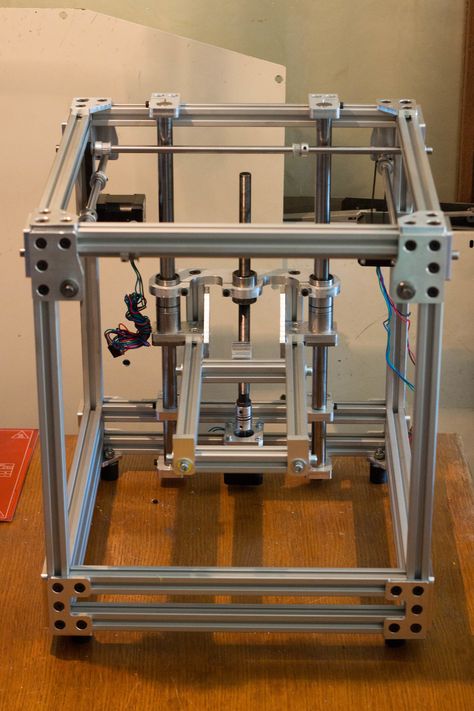 It’s huge, offers incredible accuracy and precision, and best of all, you can build your own 3D printer at home from scratch.
It’s huge, offers incredible accuracy and precision, and best of all, you can build your own 3D printer at home from scratch.
For those looking for an effective SLA 3D printer, and who do not want to pay full price, the Moai kit could be the perfect printer for you. It is so accurate that it can mechanically print up to an astonishing 5-micron layer height, according to Peopoly, though you’ll likely never reach this accuracy because you won’t need to, nor would most resins or models accommodate this.
Featuring a 70-micron laser spot size, once you’ve built this homemade 3D printer you’ll be ready to create resin molds for 3D printed jewelry, dental models, engineering pieces, as well as prototypes for rapid prototyping or fun characters if you use the Moai as a 3D printer for miniatures.
The Peopoly Moai is open to use third-party resins, for those who want to save money on lower-cost resins and are fine with the slight quality drop-off. The printer itself however does not come with any resin, so you’ll need to purchase that with the kit.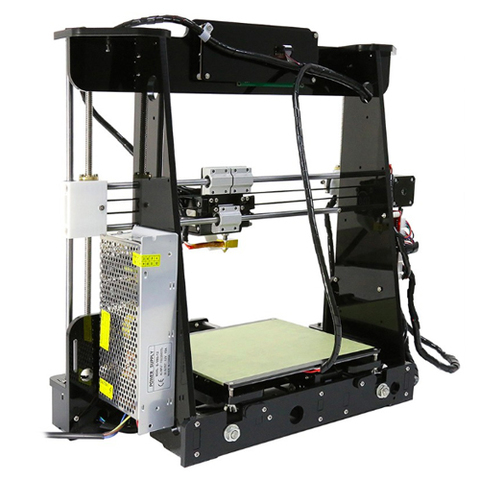 It is only to be expected that the Moai will take some time to assemble, as resin 3D printers are more complex than their FDM 3D printer counterparts, but most makers will be able to build their own 3D printer within 4 hours.
It is only to be expected that the Moai will take some time to assemble, as resin 3D printers are more complex than their FDM 3D printer counterparts, but most makers will be able to build their own 3D printer within 4 hours.
Best DIY Resin Printer
Creality Ender 3 3D Printer sale
Home Collections Ender 3 DIY 3D Printers Kit | 8.66x8.66x9.84inch | Resume Printing Function$ USD
$ USD
35 Reviews Pricing Not Include Tax
Ship From
United StatesCanadaCzech RepublicAustraliaUnited KingdomChina
Model-1
Ender-3 NEOEnder-3
Ship to
It is expected to arrive within and will cost $ USD to ship
This item can't be shipped to this Country/Region
Bundles
Quantity
28 Available
Add To Cart Buy It Now
Continue To Shopping View Cart
People who bought this item also bought
Official Creality Ender 3 3D Printer Fully Open Source with Resume Printing
- Easy and Quick Assembly: It comes with several assembled parts, you only need about 2 hours to assemble 20 nuts well.
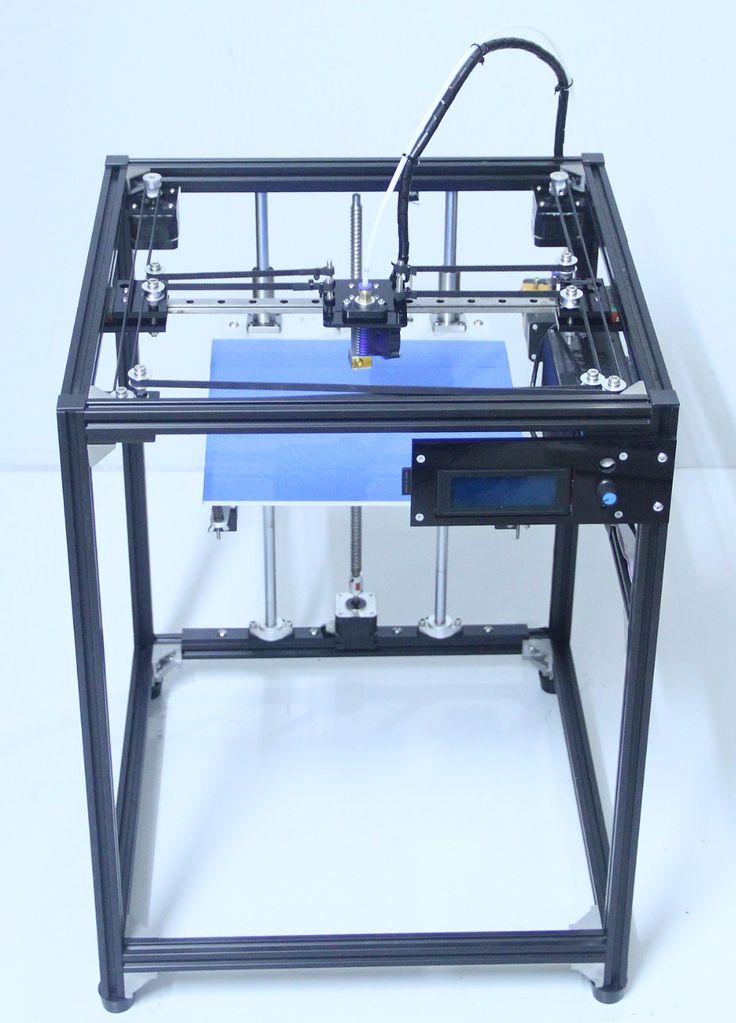
- Advanced Extruder Technology: Upgraded extruder greatly reduces plugging risk and bad extrusion; V-Shape with POM wheels makes it move noiseless, smoothly, and durable.
- Safety Protected Power Supply: Only needs 5 minutes for the hotbed to reach 110℃.
- It is a great project for middle school and high school-aged students. The perfect gift to spark a lifelong love for science and engineering, and provide a deeper understanding of machinery and robotics.
Creality Ender 3:Complete beginner's guide to 3D printing - Assembly, tour, slicing, levelling and first prints
CR Touch Install Guide - From 3D Printscape
Why Most People Choose Ender 3 3D Printer
From 2018 till now, the Ender-3 model has remained in the "Best Selling".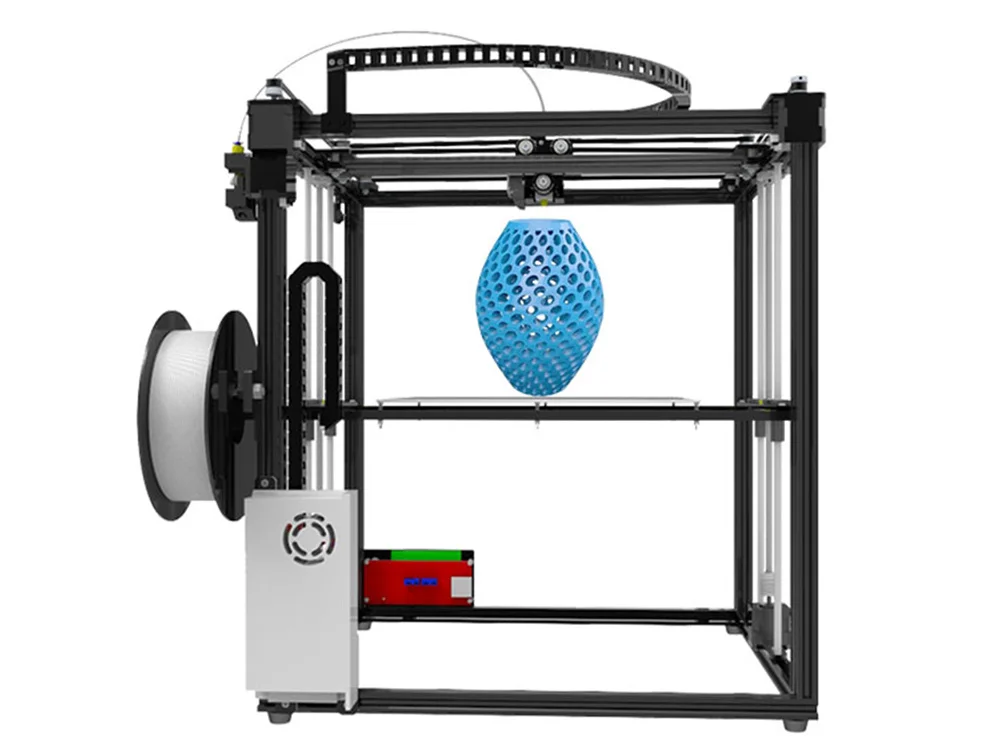 Although we are launching new Ender-3V2, Ender-3S1. So why do many choose Ender 3?
Although we are launching new Ender-3V2, Ender-3S1. So why do many choose Ender 3?
1. In terms of price: the price is lower than 200, stable printing quality and 220*220 printing size, supports different filament materials
2. In terms of performance: support resume printing, 5mins rapid heating, reliable power supply
3. Upgrade convenience: ender 3 direct drive, cr touch auto leveling kit, touch screen , tempered glass bed and more. There's do much you can do with it
4. Who chose him: News for 3d printing, 3d printing enthusiast; for DIY makers, for education... Customer
Ender 3' S FAQ:
Filament did not stick on the hotbed?
For newcomers, this is the most common problem. Do not worry, you can solve it easily. Generally,the distance between the nozzle and platform is too far or near. So rotary the knob under the platform to adjust the distance between the nozzle and platform again,at a piece of A4 paper distance or less).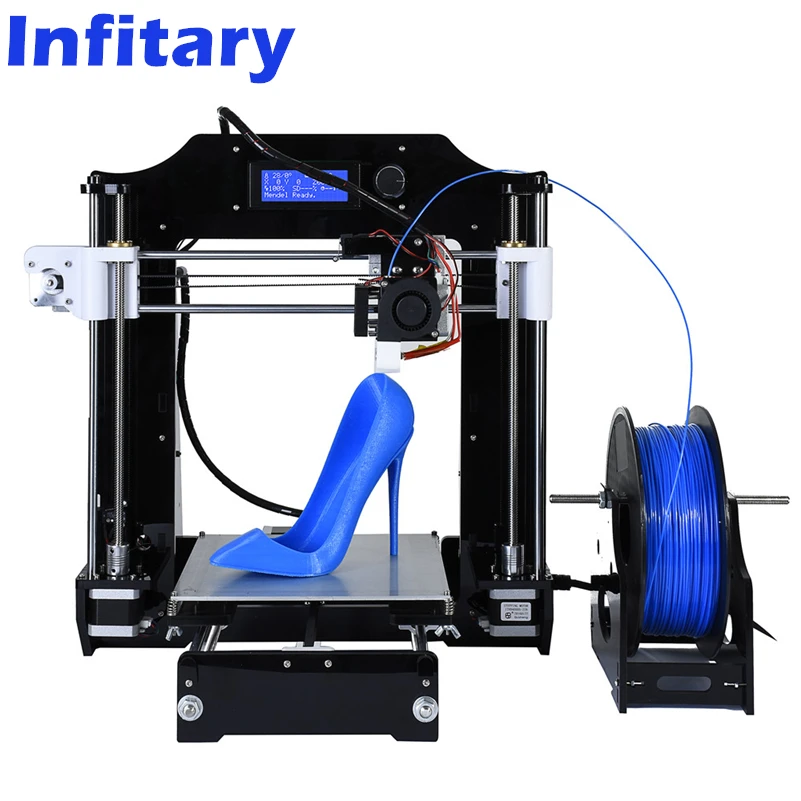
Creality Ender 3 Bed Leveling – All You Need to Know
Any structure needs a strong foundation. The same is true for 3D-printed objects. Leveling the bed on your Creality Ender 3 will ensure that that all-important first layer is solid...
How to level Creality Creality Ender 3?
Move the nozzle so that it’s positioned over the left corner of the bed. A half-inch or so from both sides is a good location.
Slide the paper between the nozzle and the bed. If it doesn’t fit, drop the corner until it does.
Once the paper is able to slide under the nozzle, very slowly raise the corner with the adjuster. Remember: Clockwise moves the bed up. As you do this, gently slide the paper back and forth. The moment you feel even the slightest resistance to your moving the paper, stop turning the knob. That corner is (almost) ready to go.
Do the same for the other three corners of the build plate. Always advance the hot end to a new corner slowly. This will prevent damage to the build plate in case the nozzle starts to drag. If this occurs, simply lower the next corner (before starting the leveling process) to make some room.
If this occurs, simply lower the next corner (before starting the leveling process) to make some room.
After you’ve adjusted each corner once, go back and check the four corners again. You may have to do further adjustments to get all four correct.
Article: Creality Ender 3 Bed Leveling – All You Need to Know.
Download
Download
Download
Download
Download
Download
Download
Download
Download
Customer Reviews
Based on 35 reviews
77%
(27)
17%
(6)
Write A Review
Ask A Question
Reviews (35) Questions (5)$ USD
$ USD
ADD TO CART BUY IT NOW
Write a review
Ask a Question
3D printing tools.
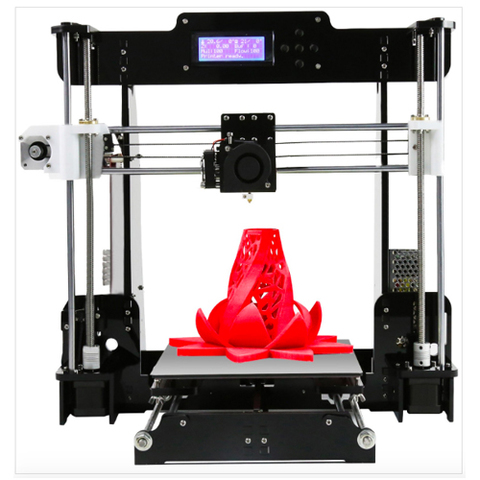 What you need to have on hand.
What you need to have on hand. If you have a 3D printer, then you will have to master the intricacies of 3D printing. And to facilitate this process, you need to acquire some tools (Tools for 3D printing).
Today we will talk about what kits and tools you may need.
Spatula, scraper…
You may need a spatula and scraper to get started. These can be painting or artistic devices that help to remove the finished model from the working platform. They are especially indispensable in cases where you print with difficult-to-separate plastic. nine0003
To remove the model with the blunt end of the spatula, try to pry the model from one side. Once you succeed, try to delete the model manually. If this does not work, then try to squeeze the spatula between the table and the model and slightly raise it.
It is important to be very careful not to scratch the surface of the table and injure yourself.
Deburring tool
This tool is the most indispensable tool of all.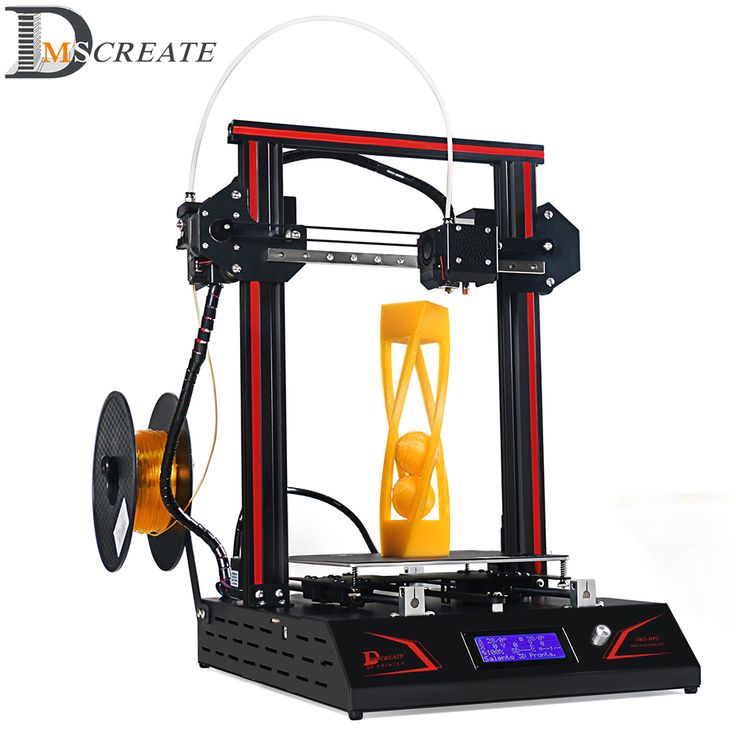 It really makes it easy to remove supports, clean up the model. At the same time, the tool is safe, and it is much more convenient to use it than to wield a knife. This tool will be especially useful when cleaning round holes. nine0015
It really makes it easy to remove supports, clean up the model. At the same time, the tool is safe, and it is much more convenient to use it than to wield a knife. This tool will be especially useful when cleaning round holes. nine0015
Utility knife
This is a knife used for cutting appliqués, sometimes called a hobby knife. This tool is ideal for precise cutting of ABS, PLA and other popular plastics. It is important that this knife is very sharp. But it is also important to follow safety measures when working with the tool.
Pliers, round nose pliers
These tools are extremely useful when removing supports. At the same time, pliers are also useful for the 3D printer itself and for post-processing. Supports can be cut a little with a sharp knife and then with pliers it will be easy to remove them not one by one, but in blocks. nine0015
Wood carving set
This set is very useful for fine cleaning of models. The tips in this set have a variety of shapes, which allows for high-quality cleaning of models of any geometry and even in hard-to-reach places: corners, roundness, etc.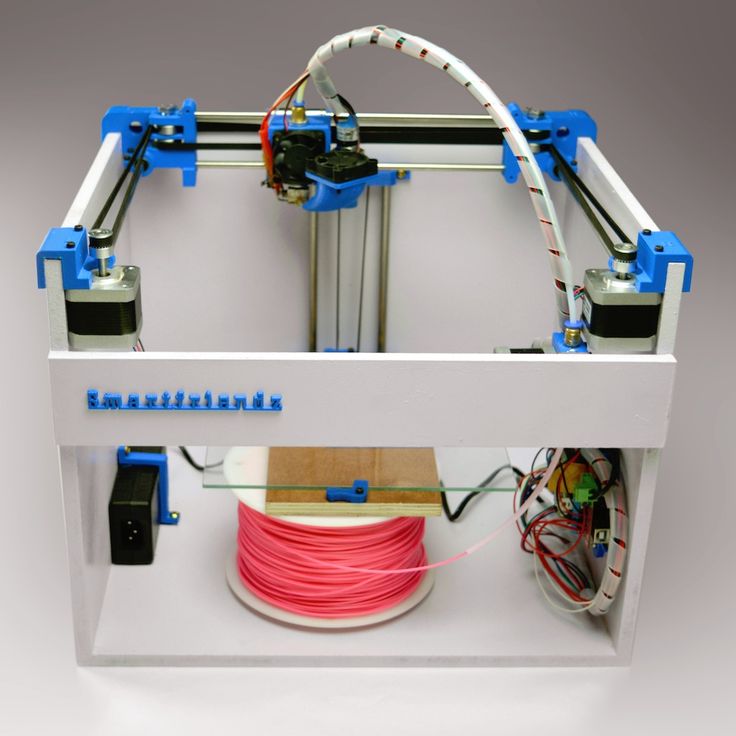
Super Glue
In fact, the choice of adhesives is now simply huge, and their possibilities are almost endless. Be sure to get superglue, as it is suitable not only for repairing or filling gaps, but also for gluing individual printed nodes. Be sure to focus on the viscosity of the composition, and also select the right tool. If you need to fill gaps, then we recommend choosing denser compositions than for assembling small parts. An important note - superglue works great with plastics such as ABS and PLA. nine0015
Files
A set of mini files will come in handy. Various forms of tools will allow grinding and smoothing of various surfaces.
Sanding (sanding) paper
With the help of grinding, surfaces can be significantly smoothed, achieving the ideal condition of the models. Especially grinding will be relevant if in the future the model will be stained. Sandpaper with a grit size of 120-200 will be the ideal solution for all types of plastics. Models made of ABS are particularly suitable for sanding. nine0015
Models made of ABS are particularly suitable for sanding. nine0015
Instead of a conclusion
All the 3D printing tools that we reviewed above will not gather dust on the shelf, waiting in the wings. If you are into 3D printing, then all of them will be in your favor. This is, in fact, the base that any 3D printer should have. Many manufacturers equip their 3D printers with a set of tools that can help with their work. If your equipment comes with a tool kit, take a close look at it so you don't waste money on what you already have. nine0003
3D printers in military service - big overview
Overview: 3D printers in military service.
Source: https://all3dp.com/
The military industry has always been at the forefront of progress: many inventions either began their life as military or dual-use products, or, in the very first years after their appearance, were involved in this area . In this age of digital technology, this fate has not escaped 3D printing.
3D printers are actively used by military contractors and direct employees of all branches of the military. nine0015 In this article, we will talk about the use of 3D printing in the military-industrial complex around the world: from providing military equipment with spare parts, to operational printing of drones and buildings anywhere.
In Russia
JSC "Federal Research and Production Center "Titan-Barricades", which develops missile systems and military vehicles, has bought and uses in prototyping a kit based on an XJRP SPS450B 3D printer. The kit consists of two devices: directly a 3D printer with a large print area, working on SLA technology, and a polymer curing chamber. nine0015
| XJRP SPS450B 3D Prototyping Kit. |
| Source: http://pechat3d.ru/ |
The 3D printer is planned to be used to create miniatures of future parts, cases or mechanism assemblies. The first product made on this 3D printer was a prototype wheel with a tread.
The first product made on this 3D printer was a prototype wheel with a tread.
Ilyushin specialists plan to produce some simple parts for the Il-112V military transport aircraft using 3D printing. nine0003
| Model of the Il-112V transport aircraft. |
| Source: © ITAR-TASS |
Together with specialists from the Voronezh Aircraft Plant (VASO), PJSC Il specialists use 3D-printed parts as test samples, which will be replaced with originals made by the classical method before departure. But in the future, it is planned to master the printing of simple components that will be installed on mass-produced aircraft. nine0003
Pavel Chernikov, First Deputy General Director of PJSC Il, said: “The IL-112V is being created from scratch, and many parts and components need to be improved during installation on the aircraft. We started using a 3D printer to see how right or wrong our calculations were. Such technologies make it possible not to interrupt the finalization of finished products, which, in turn, significantly reduces the installation time of equipment and reduces the cost of the production process.”
Such technologies make it possible not to interrupt the finalization of finished products, which, in turn, significantly reduces the installation time of equipment and reduces the cost of the production process.”
Research and Production Corporation "Uralvagonzavod" named after F. E. Dzerzhinsky purchased a 3D printer S-Max manufactured by ExOne. nine0003
| ExOne S-Max 3D printer. |
| Source: http://3dtoday.ru/ |
This printer is designed for making sand molds. Molds are used for casting metal blanks. As the deputy chief metallurgist of NPK Uralvagonzavod said: “We will no longer have to manufacture expensive foundry equipment for experimental, new products and complex castings of small series. It will be enough for a designer to develop a 3D model of the required casting, according to which, also in 3D, the mold is made. The finished cores will go to the foundry. In addition, they can be transported to solve the problems of the corporation over any distance.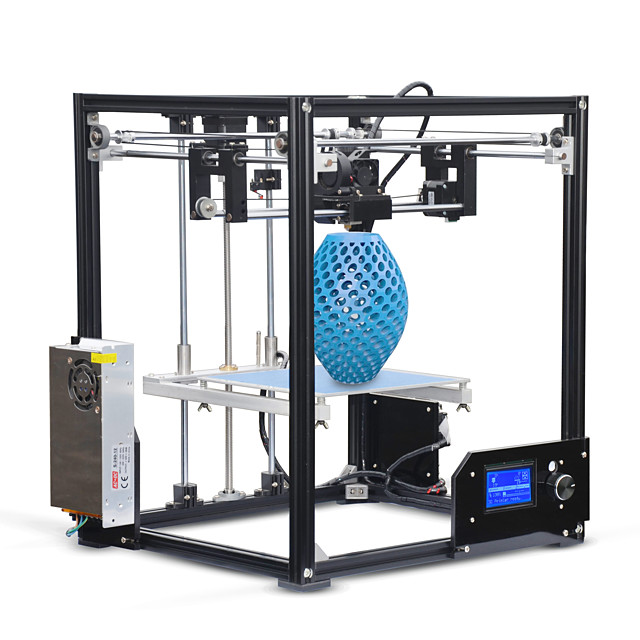 " nine0003
" nine0003
| A sand mold produced by the S-Max 3D printer, used for casting metal blanks. |
| Source: http://3dtoday.ru/ |
This is not the first professional 3D printing system that Uralvagonzavod uses. In 2015, the company purchased a Fortus 400mc 3D printer manufactured by Stratasys Corporation. This printer is used in the production of parts for the T-14 "Armata" tank and other vehicles manufactured by Uralvagonzavod. nine0003
| Tank T-14 ("Object 148") on the platform "Armata". |
| Source: OAO NPK Uralvagonzavod |
Representatives of the company note that the introduction of 3D printing saves time and production resources. It is not required to spend forces on turning metal samples. If a part doesn't fit, it's easier to reprint it than remake it.
Russian Helicopters Holding, according to its CEO Andrey Boginsky, plans to 3D print about a hundred parts for rotorcraft by 2020.-kupit-v-soin-store.ru-7.png) nine0003
nine0003
| Andrey Boginsky. |
| Source: © Yuri Smityuk/TASS |
In 2018-2019, it is planned to conduct a series of bench tests in order to obtain all the necessary certificates for printed parts by mid-2020. In total, it is planned to test about a hundred parts and assemblies.
Compared to traditional parts, 3D-printed parts are lighter and their production will be deployed at the Kazan Helicopter Plant. As a result of the use of parts obtained by 3D printing, the holding plans to reduce the cost of products. nine0003
In the world
The road of army 3D printing is not paved with roses. When we hear about cool 3D printed military projects, we have to consider some of the challenges that come with doing them.
| Soldiers get acquainted with FORTUS. |
Source: https://all3dp. com/ com/ |
Quality certification problem. Many things that the army is supposed to produce using 3D printing are designed for harsh operating conditions, they are subject to high requirements for compliance with dimensions, geometry and quality, and an unsuccessfully printed part can lead not only to monetary losses, but also to the death of soldiers . This issue will most likely be resolved by certification of the 3D printers themselves. nine0003
Insufficient printing speed for the army. Even the most expensive 3D printer is not fast enough. There are also issues of privacy/security, copyright, and many other little things that are not obvious at first glance.
While these issues are being addressed, the US Department of the Navy has decided to host a 3D printing hackathon. 12 organizations were invited to participate, which showed their developments in the field of 3D printing for the Navy. According to the participants, fully or partially printed inventions: “Allow to improve the ability to maintain combat readiness.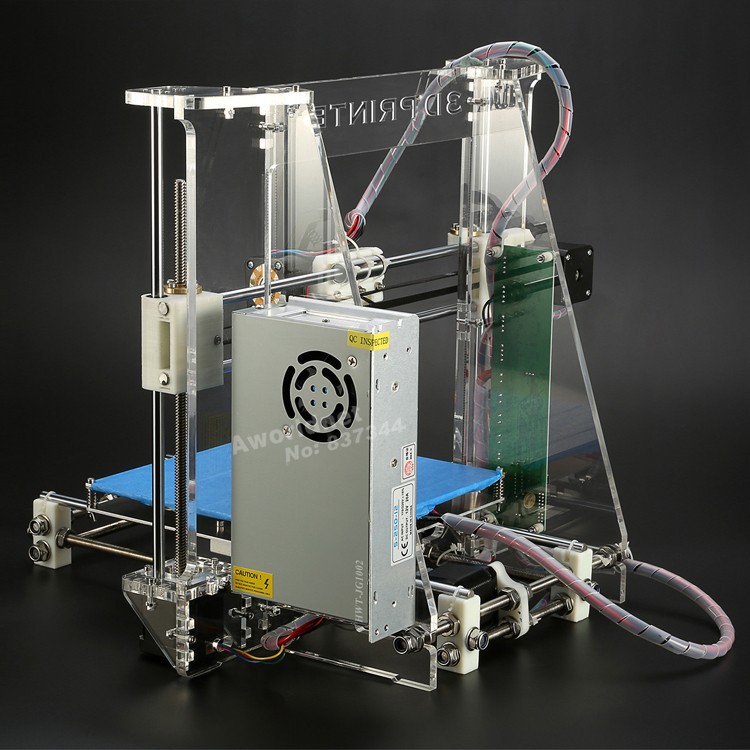 ” nine0003
” nine0003
One of the new and memorable developments was the four-legged transporter robot (MeRlin). It turned out to be quite compact and can run, jump and walk up and down stairs. Three-dimensional printing made it possible to create, right in the supporting frame of the robot, a hydraulic manifold that serves to transfer energy to the robot drives. Those interested in robotics will find Merlin similar to the transport robots of Boston Dynamics.
| The device of the robot MERLIN (Merlin). |
| Source: https://all3dp.com/ |
Aviation
A 3D-printed drone was launched from one of the British Royal Navy ships at sea, HMS Mersey. The device was created in collaboration with the University of Southampton.
| Launch of a 3D printed drone. nine0085 |
| Source: https://all3dp.com/ |
Body made of nylon, laser sintered. With a wingspan of one and a half meters, the drone weighs only three kilograms. The main task of this project was to create a small drone for exploring the surroundings, which can be quickly printed on board the ship.
With a wingspan of one and a half meters, the drone weighs only three kilograms. The main task of this project was to create a small drone for exploring the surroundings, which can be quickly printed on board the ship.
The drone, named SULSA, was equipped with a small video camera. Management was carried out by researchers from Southampton using video cameras. The flight, with a range of 500 meters, lasted only a few minutes, but proved that 3D printed drones could be launched from the sea. nine0003
| The route of the SULSA drone during a test flight. |
| Source: https://www.southampton.ac.uk/ |
3D printing solves the problem of ship capacity by allowing equipment to be printed at sea as needed. The only thing you need to have on board to print a drone is a 3D printer and a supply of nylon, which is disproportionately cheaper than a case made using traditional technologies, and takes up much less space.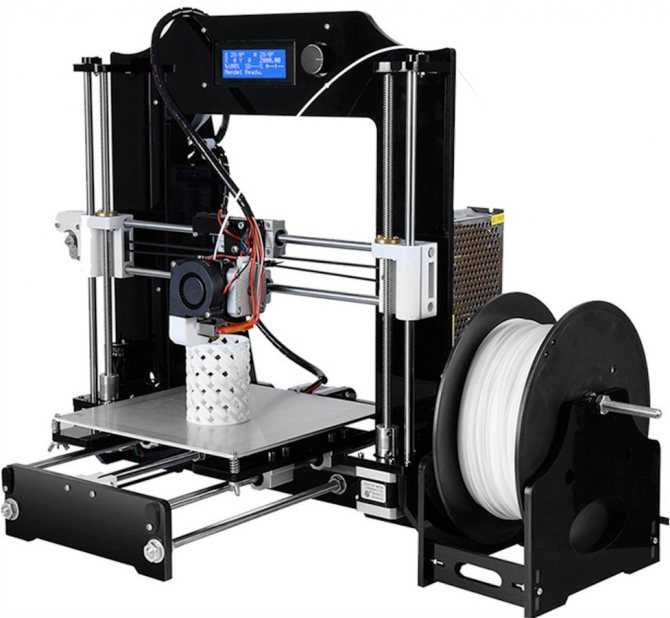 nine0003
nine0003
The only drawback is the print speed, but it is expected to improve in the near future. Engineers from the American Army Research Laboratory (ARL) are trying to fight this shortcoming. They are developing drones that can be made within a day. Engineers are building drones that can be used to assist soldiers in communication, delivery, and aerial surveillance.
| Eric Sopero demonstrates his drone to US military personnel. nine0085 |
| Source: https://all3dp.com/ |
Drones are made using off-the-shelf motors and propellers, but their body is almost entirely 3D printed. The maximum speed of the drone is 55 miles per hour. Drones can either be controlled by the operator from the remote control or operate in a completely autonomous mode. Work continues to reduce noise and increase flight range, maneuverability and payload.
The US Army is partnering with the Marine Corps to develop an unmanned vehicle parts catalog that can be downloaded to an employee's tablet.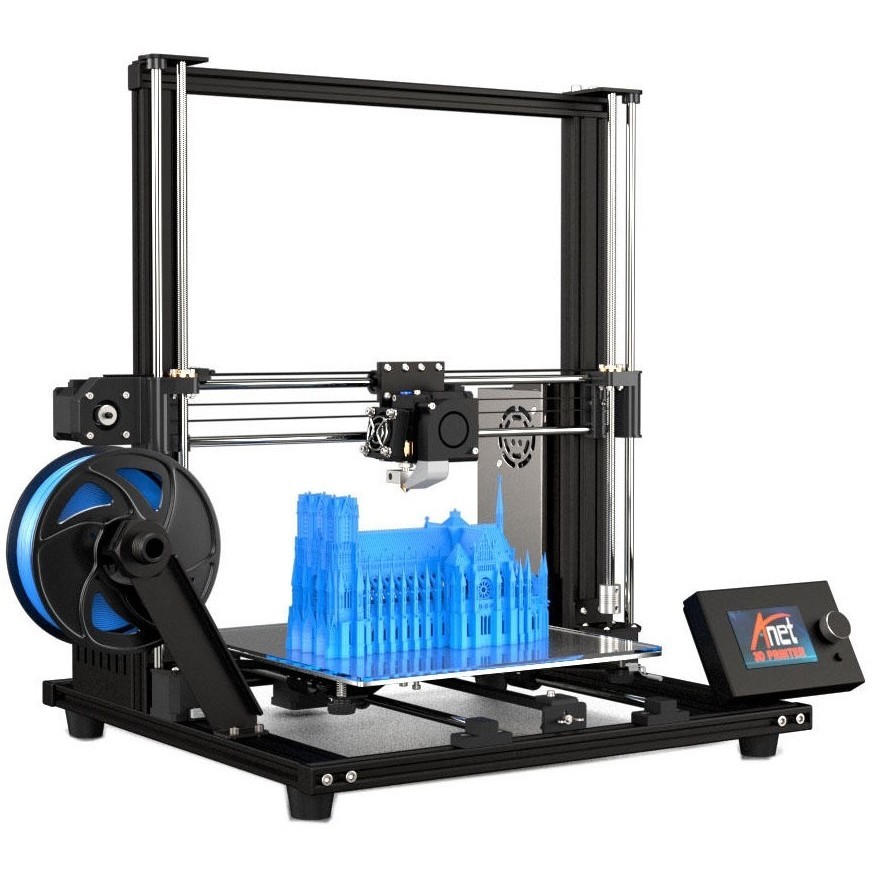 The software of this catalog allows you to order or 3D print a product directly from it. nine0003
The software of this catalog allows you to order or 3D print a product directly from it. nine0003
| American soldier with a drone. |
| Source: https://all3dp.com/ |
In addition to experiments with drones, 3D printing is also used in “big” aviation.
For example, the US Air Force has announced that it will 3D print toilet seats for military transport aircraft. The announcement comes after a scandal erupted when it was reported that each toilet seat cost the Air Force $10,000 to replace. nine0003
| Airplane seat for $10,000. |
| Source: https://all3dp.com/ |
The public, which already believed that the government did not always save on military spending, was extremely outraged. After an investigation initiated by one of the senators, the military department announced that it would print toilet seats on 3D printers.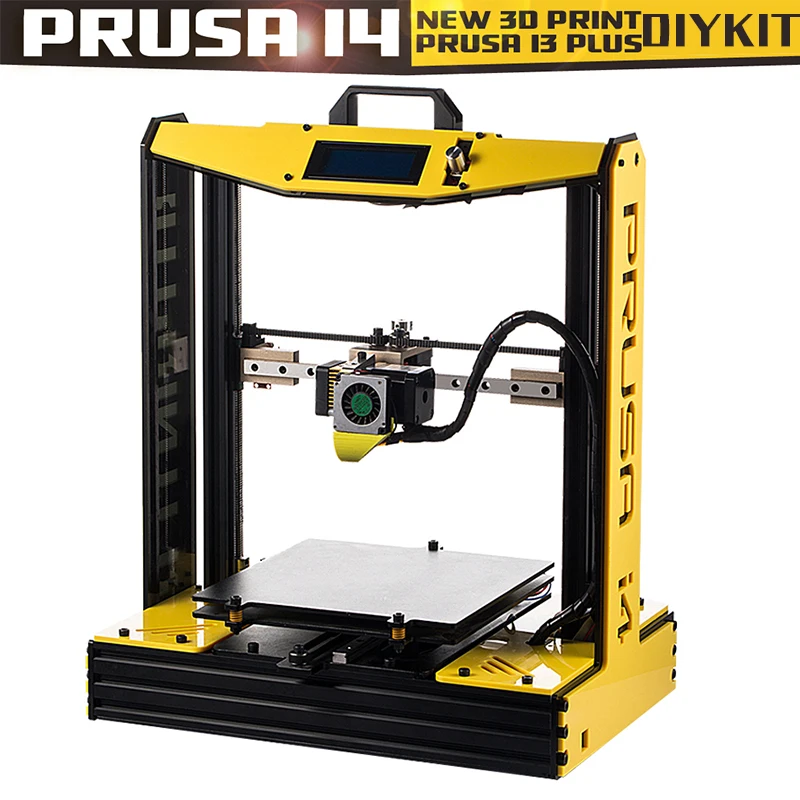
Why is the toilet lid so expensive? These covers were mass-produced by Lockheed Martin, and in 2001 this giant of the military industry stopped their production. In addition, the military department explained that the C-5 toilet seat is not only a cover, but also part of the lavatory wall, which is designed to protect the body of the aircraft from corrosion that can be caused by urine. nine0003
According to the manufacturer, its high cost is due to the need to suspend the production of other goods. In the case of independent production of the Air Force, the spare part will cost only $300.
The manufacturer now claims that the US Air Force does not own the copyright to this cap. It is not known how this lawsuit will end, but the Air Force says that they will no longer buy this spare part, because they can make it themselves much cheaper.
As stated by the department: “The use of 3D printing allows us to create parts that are no longer being produced, resulting in significant cost savings.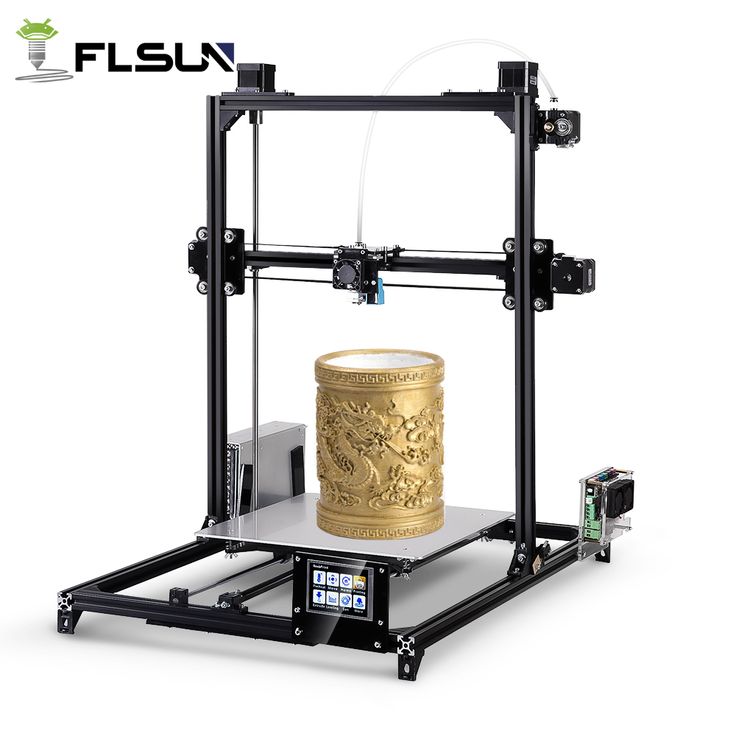 ” nine0003
” nine0003
| C-5 transport aircraft. |
| Source: https://all3dp.com/ |
Another example of 3D printing was demonstrated by the Maryland Marines. Using 3D modeling and 3D printing, they made a $70,000 F-35 fighter jet part for just 9 cents. The Marines were assisted by Sam Pratt, a mechanical engineer in the design office of the Carderock Additive Technology Factory. nine0003
Sam revealed that he was with a support platoon in South Korea teaching CLB-31 Marines how to design 3D models and how to use 3D printing. His main task was to test the performance of 3D printers on marine vessels. He also taught employees how to use Solidworks CAD.
| Sam Pratt talks to the Marines about 3D printing. |
| Source: https://all3dp.com/ |
When there was a problem printing a part needed to repair an F-35, a Marine officer offered to team up to cooperate. It turned out that the employees had already developed this part, but could not find the right dimensions. The fact is that they used a hobby-grade 3D printer and the free 3D editor Blender - Blender is ideal for implementing art projects, but it is difficult to create engineering products in it.
It turned out that the employees had already developed this part, but could not find the right dimensions. The fact is that they used a hobby-grade 3D printer and the free 3D editor Blender - Blender is ideal for implementing art projects, but it is difficult to create engineering products in it.
| American Marine at the 3D printer. |
| Source: https://all3dp.com/ |
Pratt helped with modeling and printing issues, the part was printed in PET-G.
Currently there are about 90 parts for ground vehicles that are approved for 3D printing in the military, you can download one of these parts and print it.
Large manufacturers are also moving forward and mastering 3D printing technologies. Thus, the giant of the aviation and military industry Lockheed Martin is actively investing in 3D printing. nine0003
Lockheed Martin uses 3D printing in its manufacturing processes, with over a hundred 3D printers in its arsenal for prototyping, tooling and printing finished products.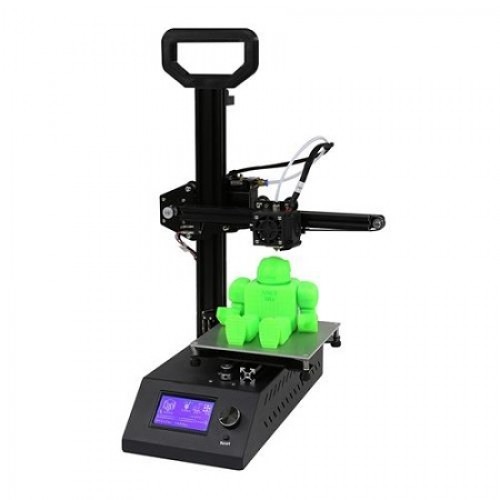
There are several reasons why Lockheed Martin uses 3D printing:
- Reducing the time of production of products - up to 80%;
- Reducing the weight of parts - up to 40%;
- Proven reliability of parts in difficult conditions;
- The most important thing is the possibility of an additional increase in production in the near future. nine0452
For example, it takes 18 to 20 months to manufacture fuel tanks for spacecraft using traditional technologies. The production of such a tank by 3D printing takes two weeks. In this case, a better uniformity of the structure of the tank elements is achieved. The tanks are manufactured using a Sciaky printer using EBAM (Electron Beam Direct Manufacturing) technology, in which a bar of metal material is heated by an electron beam.
| nine0085 |
| Lockheed Martin uses 3D printing in its manufacturing processes. |
Source: https://all3dp.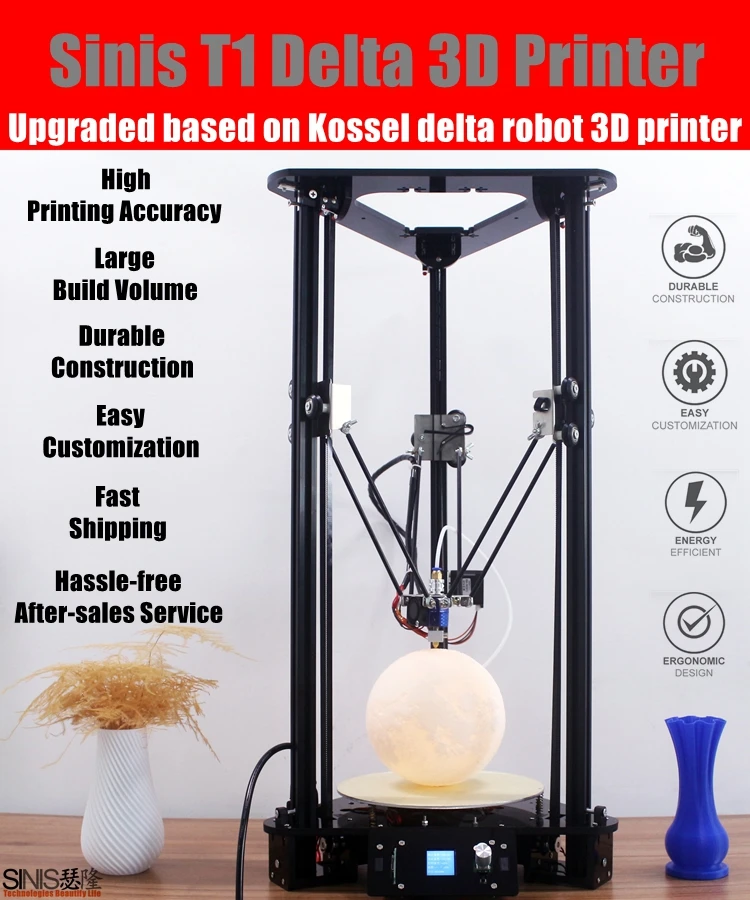 com/ com/ |
Lockheed Martin 3D printed products have already passed the laboratory testing stage and are in active use. Some of them travel around our solar system: the Jupiter-exploring Juno satellite has eight 3D-printed brackets, and the Orion spacecraft uses printed high-pressure valves. nine0003
Fleet
In South Korea, loudspeaker grilles for aircraft carriers are printed on 3D printers. Shipping these gratings from Europe took up to seven months and cost $612 each. The printed part is made in 4-5 hours and costs about $35. Printing parts reduces their cost and production time, and localization of production reduces dependence on foreign supplies, which may be delayed or become unavailable for various reasons.
General Electric has contracted with the US Navy to develop software for rapid 3D printing of spare parts for ships, aircraft and other critical military installations. The contract, worth nine billion dollars, is designed for four years and provides for the creation of technology "digital duplicates" - a complex of software, base models and hardware.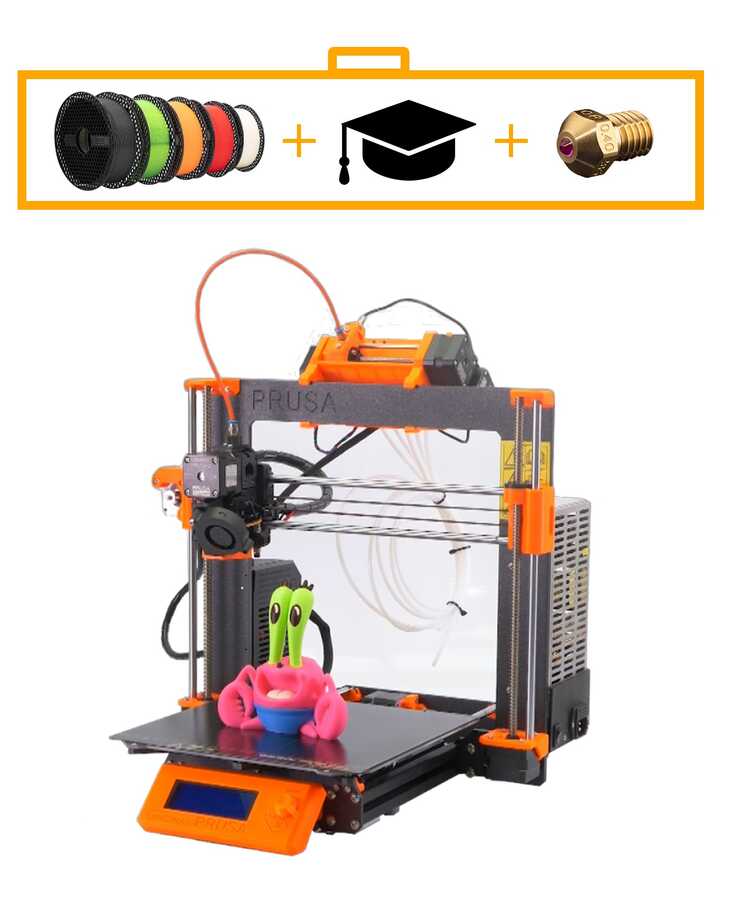 This technology will be used both for those spare parts that are no longer manufactured, and for new parts of ships and aircraft. nine0003
This technology will be used both for those spare parts that are no longer manufactured, and for new parts of ships and aircraft. nine0003
| Concept Laser M2 3D printer printing with metal powder. |
| Source: https://all3dp.com/ |
The project is being implemented in two stages: at the first stage, software and hardware parts will be developed, at the second stage they will be combined into a complex capable of quickly creating the necessary products using laser metal melting technology (DMLM).
Ammunition and small arms
The US Army designed and 3D printed a fully functional grenade launcher called "R.A.M.B.O". The development of the grenade launcher took about six months. He fires 3D printed grenades
| R.A.M.B.O. grenade launcher |
| Source: https://all3dp.com/ |
The grenade launcher consists of 50 parts, all of which, with the exception of springs and hardware, are printed on a 3D printer. nine0003
nine0003
| 3D printed parts of the R.A.M.B.O. |
| Source: https://all3dp.com/ |
R.A.M.B.O. demonstrated characteristics similar to the M203 underbarrel grenade launcher made in the traditional way.
A US Marine team is 3D printing and testing small explosive containers that can be used on the battlefield. nine0003
| 3D printed container for explosives. |
| Source: https://all3dp.com/ |
The development of small arms began in the private sector, with the most primitive pistols. On the Internet, you can find drawings of products such as the sensational Liberator. The first 3D printed pistol was printed on a professional Stratasys Dimension SST printer. The gun is chambered for 9 caliber rounds.mm and is charged during assembly.
A gun whose main components are made of plastic and printed using a 3D printer.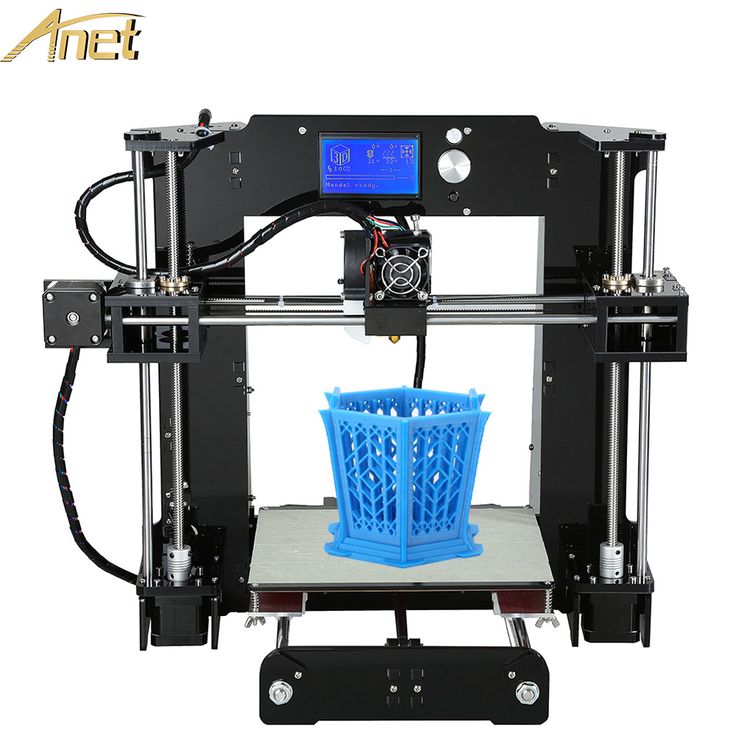 Frame: YouTube. Frame: YouTube. |
| Source: YouTube |
The very possibility of obtaining weapons using 3D printing so excited the public that the drawings of the "Liberator" were removed from the public domain, and in the United States a ban on 3D-printed weapons was introduced. nine0003
Solid Concepts has created a replica of the .45 Browning M1911 pistol, the Solid Concepts 1911 DMLS, using selective metal laser sintering. The first sample withstood 50 shots, later ones are capable of firing 600 shots without visible damage.
| A working replica of a .45 Browning pistol M1911 - Solid Concepts 1911 DMLS, made by selective metal laser sintering. nine0085 |
| Source: Solid Concepts Inc |
Recently, the ban on the distribution of 3D printed weapons was lifted by a court decision. So, it is now possible to print weapons in the USA, with some restrictions: they can be no more than 50 mm in caliber and models cannot be freely available.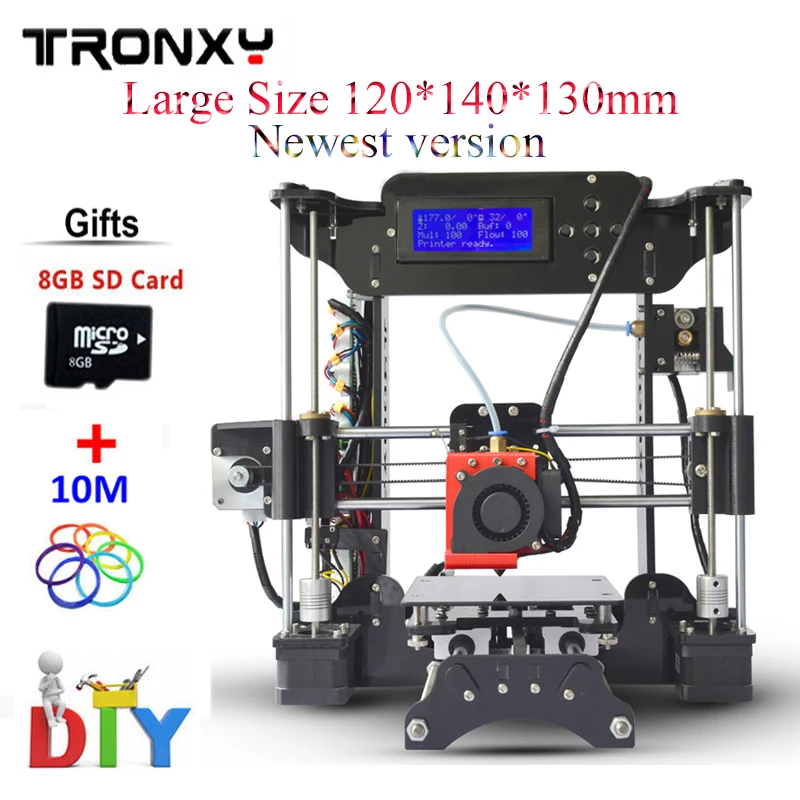 This ban was easily circumvented by Defense Distributed, which posted models of their rifle for sale on one of the online services.
This ban was easily circumvented by Defense Distributed, which posted models of their rifle for sale on one of the online services.
| M4 rifle from Defense Distributed. |
| Source: https://depositphotos.com/ |
"Our models are not in the public domain, as buyers pay money for them," - said the representative of the company.
Uniforms and protection
The Vatican decided to use 3D printing technology for the production of traditional Swiss Guard headdresses. nine0003
| Swiss Guard. |
| Source: https://all3dp.com/ |
The Swiss Guard is the personal guard of the Pope. From time immemorial, their form was made of metal, but now they have decided to keep up with the times. A 3D printed helmet will be significantly cheaper and, more importantly, lighter.
| 3D printed helmet prototype. |
| Source: https://all3dp.com/ |
The helmets are made of PVC and bear the coat of arms of Pope Julius II, who founded the Swiss Guard in 1506.
The US military turned to the creators of the Iron Man costume, a movie character, for help in creating uniforms for the soldier of the future. The military commissioned Legacy Effects to develop and print the prototype components for the TALOS Special Outfit Kit. nine0003
TALOS will contain a cooling system to maintain a comfortable temperature in the suit, a tactical display and an integrated exoskeleton.
| The concept of the uniform of the future - a set of special uniforms TALOS. |
| Source: http://3dprintingindustry.com/ |
The studio team will join the large team already working on the project, which includes bioengineers, combat veterans and technologists.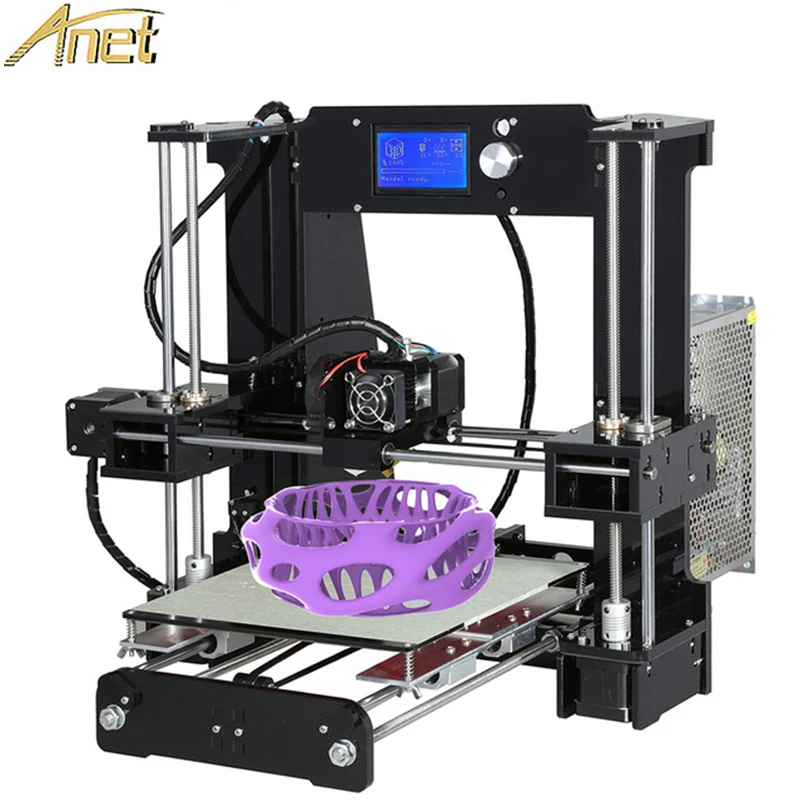 nine0003
nine0003
Building
The US Army Research Engineering Team printed a large building in just 21 hours. The area of the building is 47.5 square meters. The barrack-style building is the result of a three-year US Army Construction Engineering Research (ACES) program with a laboratory in Champagne, Illinois.
| 3D printed barracks. |
| Source: https://all3dp.com/ |
Such a short construction time means that such temporary structures will become more affordable with the development of 3D printing. These buildings can be used as housing for refugees or temporary housing in case of natural disasters.
| The process of building a 3D printer. |
| Source: https://all3dp.com/ |
The building looks like an ordinary house, but in the future such buildings can be given any look. Such buildings are also more energy efficient than traditional ones - they require less energy for heating and cooling.
Such buildings are also more energy efficient than traditional ones - they require less energy for heating and cooling.
ACES cuts the amount of building materials used in half. Reducing the need for labor is 62%, compared with the construction of plywood structures.
| Laying concrete mix with a construction 3D printer. nine0085 |
| Source: https://all3dp.com/ |
ACES allows buildings to be printed using local materials.
Self-Sufficiency
A collaboration between the US Army Research Laboratory and the Marine Corps has led to the development of a technology to make 3D printed PET filament from plastic waste such as water bottles.
According to the military, water bottles and plastic packaging are the most common litter on the battlefield. Both US and allied forces produce large amounts of this waste, and the ability to recycle it will reduce the cost of transporting raw materials. The filament obtained from recycled materials, provided that it is properly cleaned and dried, is completely equivalent in tensile strength to its analogue from primary raw materials. nine0003
The filament obtained from recycled materials, provided that it is properly cleaned and dried, is completely equivalent in tensile strength to its analogue from primary raw materials. nine0003
| Joint work of employees of the Research Laboratory of the US Army and the Marine Corps. |
| Source: https://all3dp.com/ |
A plant is being developed, housed in a standard shipping container, that will allow the production of filament from waste.
The US Army is also developing food printers. Their advantages are obvious:
- the possibility of reducing the cost of food, compared with the traditional delivery of rations from abroad;
- the possibility of compiling an individual menu, in accordance with the preferences of each soldier;
- the possibility of individual balancing of the diet, depending on the dietary needs of each soldier.
The printer, like classic 3D printers, stacks components in layers.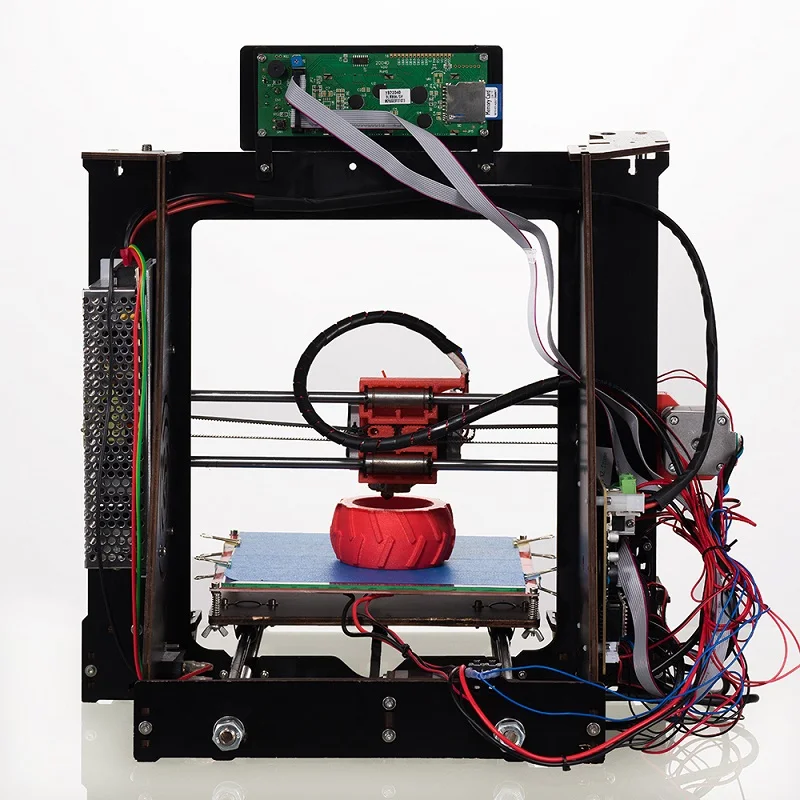
| nine0086 |
| 3D printed food. |
| Source: https://all3dp.com/ |
The printer uses the ultrasonic agglomeration method to 3D print small snacks.
Electronics
Researchers at the University of Massachusetts Lowell have developed a new way to 3D print conductive components for radar systems. They have created a new type of ink that allows radars to be made using 3D printing. nine0003
| Electronic components obtained by 3D printing. |
| Source: https://all3dp.com/ |
The development was sponsored by Raytheon, one of the defense industry companies.
According to the developers: “The use of this technology makes it possible to obtain cheaper and more versatile systems than those obtained by classical methods. This technology has obvious advantages in the military sphere, but it can also be used in civilian industry, for example, in the production of weather stations or unmanned vehicles. The main problem was obtaining ink with desired properties, capable of working with high-frequency radiation.” nine0003
The main problem was obtaining ink with desired properties, capable of working with high-frequency radiation.” nine0003
| Applying ink to a plastic plate. |
| Source: https://all3dp.com/ |
The 3D printer is equipped with two heads with different operating principles. One applies the ink by spraying, the second fixes them by microvibration. Radar system components such as a voltage controlled capacitor (varicap), phase shifter (for electronic control of phase array radar systems) and frequency filters can be manufactured using this technology. nine0003
The ink material is based on nanoparticles that can be injected into molten plastic and then solidify with it, creating conductive structures.
The US Air Force Research Laboratory teamed up with American Semiconductor to create a silicon-polymer memory chip.
Using 3D printing technology, they have developed a new ultra-flexible chip with built-in sensors.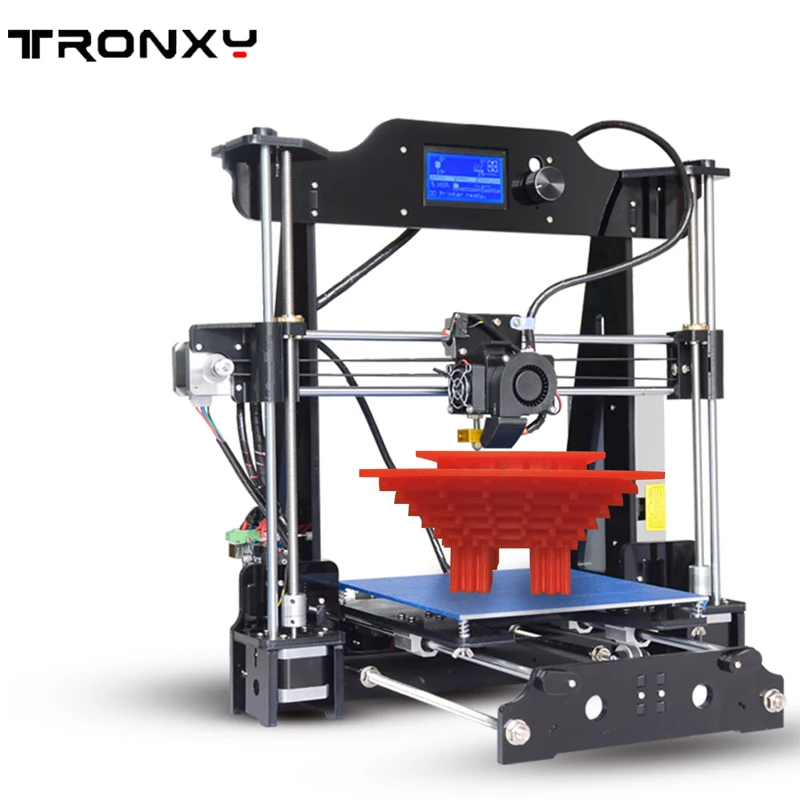
| Dan Berrigan holding the new flexible chip. |
| Source: https://all3dp.com/ |
According to American Semiconductor, the thickness of the silicon wafer is 2000 angstroms. This tiny chip can measure humidity levels, temperature, muscle fatigue, and so on. This makes it ideal for use in new technologies for monitoring the well-being of wounded soldiers or the elderly.
Flexible electronics technology is being developed not only by research laboratories, but also by industry giants. nine0003
Apple, Boeing and the Massachusetts Institute of Technology formed an alliance to collaborate with the US Department of Defense in the field of flexible electronics.
The goal of the alliance is to have high quality flexible electronics by 2020.
The Department of Defense plans to provide a consortium called the FlexTech Alliance with $75 million over 5 years and raise $96 million in additional funding.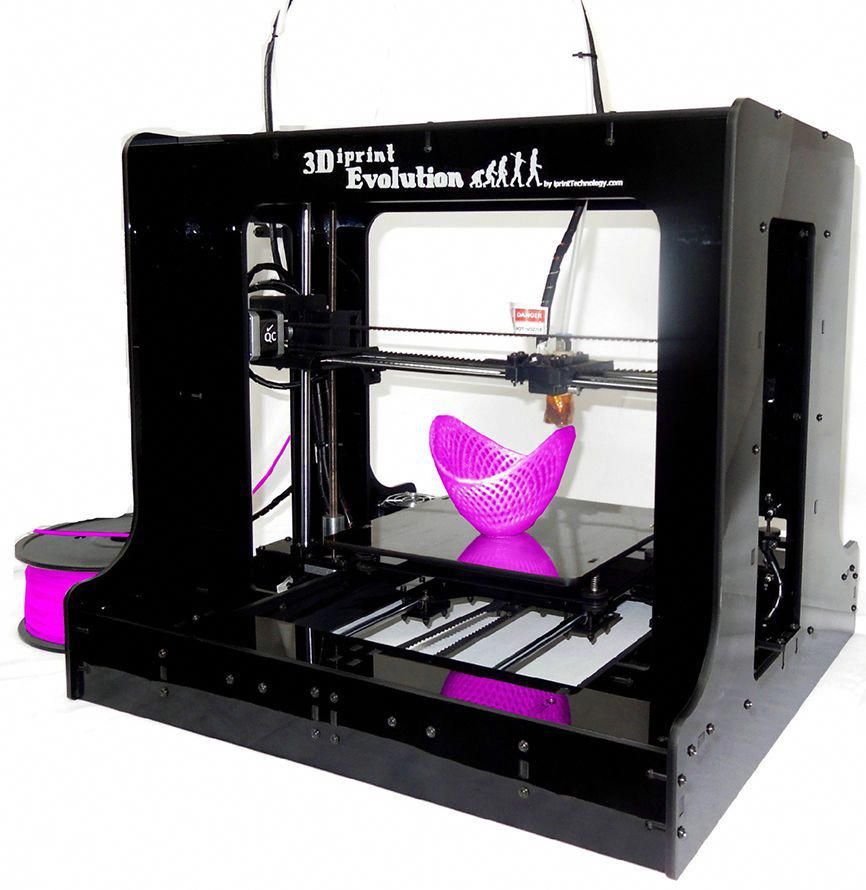
| Smart clothes. |
| Source: https://all3dp.com/ |
The consortium includes 96 companies, 11 specialized laboratories, 42 universities and 14 state and regional organizations. The key partners of the consortium are Apple, Boeing, General Electric, General Motors, Lockheed Martin, Motorola Mobility, Qualcomm and many others. Partner universities include Cornell, Harvard, Stanford, New York University and the Massachusetts Institute of Technology. nine0003
Practical applications will be primarily focused on military targets, such as uniforms with vital sign monitors. Pressure sensors can also be installed on vehicles to monitor deformation in key areas.
The civilian application of such microcircuits will help athletes control body function and improve performance, and people suffering from cardiovascular disease, control and prevent seizures. This technology will allow hospitals to monitor their patients en masse.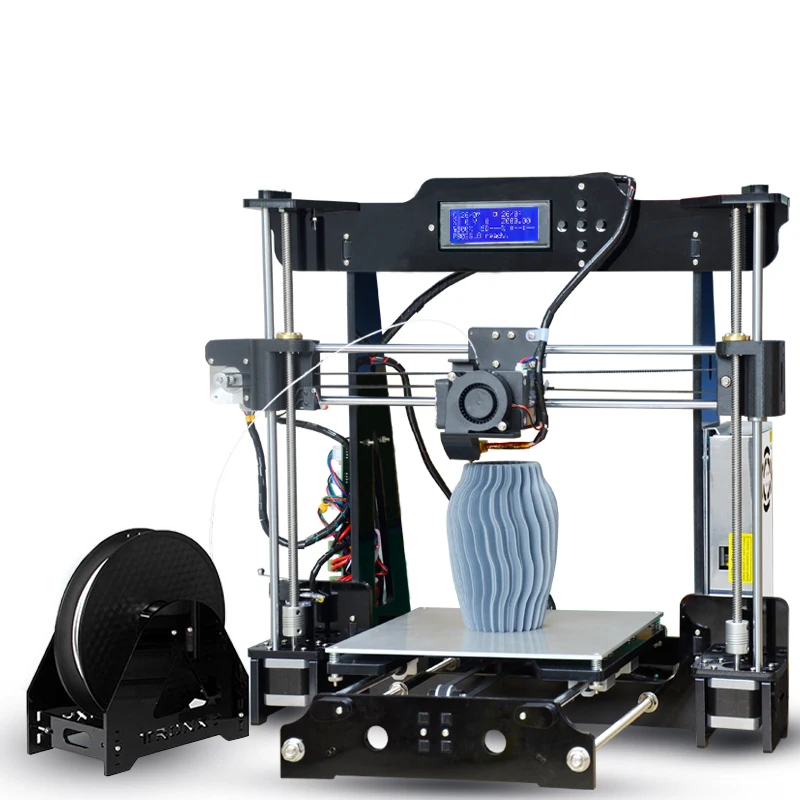 nine0003
nine0003
Concepts or Looking Ahead
British scientists and engineers are working on growing military drones using chemical technology.
| Hydroponic chemputter. |
| Source: https://all3dp.com/ |
Military developers explore all possible and impossible technologies. In this case, they are working on a "chemcomputer". “Chemputer” is a registered trademark of BAE Systems. The technology is being developed by Professor Lee Cronin of the University of Glasgow and is a 3D printing of biomaterial drones and aircraft. nine0003
Unlike classic 3D printers, a chemputter performs chemical reactions at the molecular level, creating everything from electronics to wings.
| Drone prototypes. |
| Source: https://all3dp.com/ |
While British scientists are inventing new technologies in printing for the military department, simple makers are creating weapons of the future using ordinary 3D printers.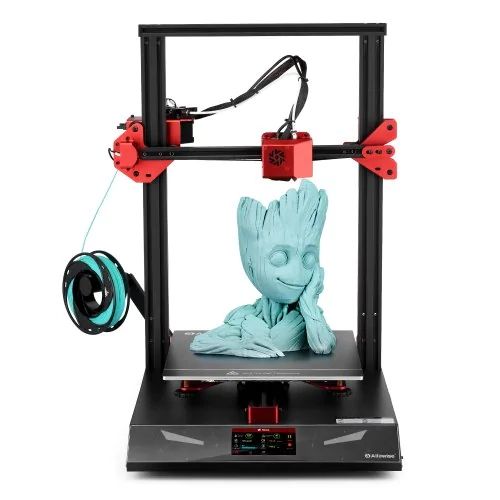 nine0003
nine0003
So, David Wirth created a hand railgun in his workshop.
| David Wirth with his railgun. |
| Source: https://all3dp.com/ |
Possibly inspired by the computer game Quake, he created this weapon using CAD, a 3D printer and an Arduino platform. The railgun can use aluminum or graphite bullets as ammunition, firing them at a speed of 250 m/s. The design is based on six huge capacitors, which, with a total weight of about nine kilograms, store more than 1800 joules of energy for each shot. The railgun also consists of batteries, two parallel contact rails and a pneumatic ammunition supply system. nine0003
| Diagram of a railgun by David Wirth. |
| Source: https://all3dp.com/ |
Conclusion
3D printing technology is increasingly used in the military.


